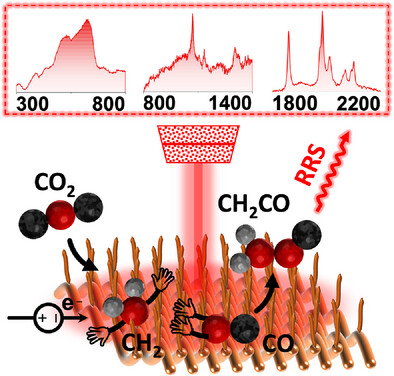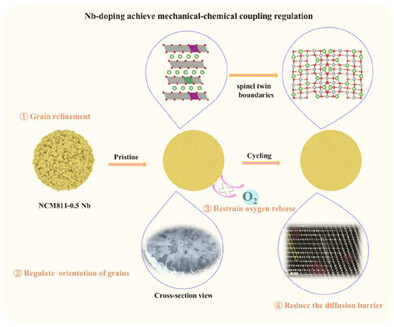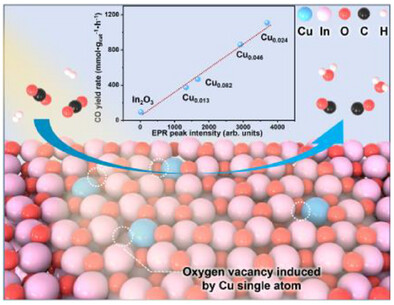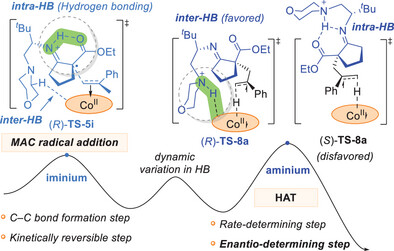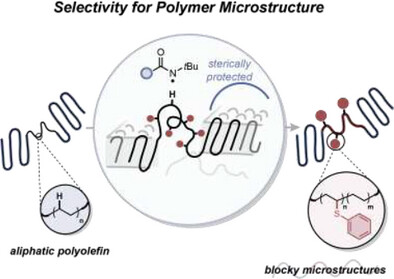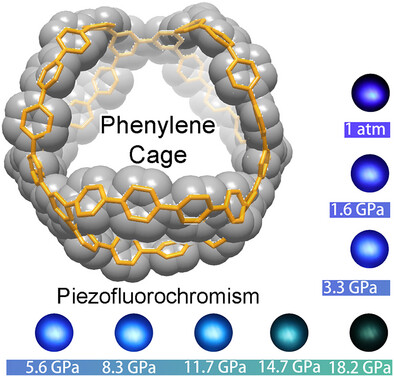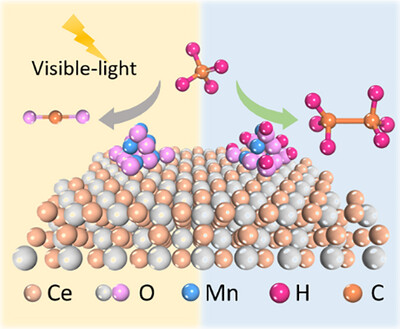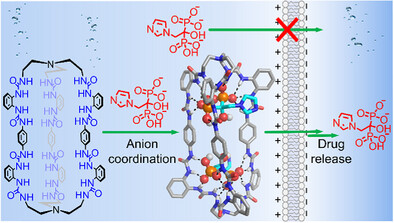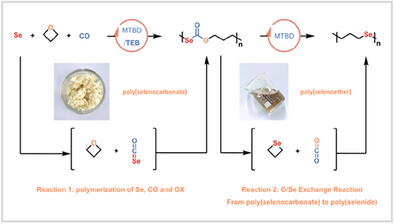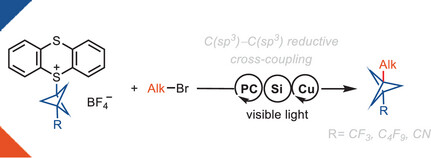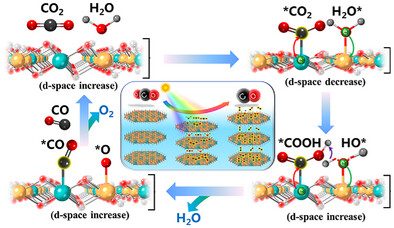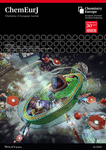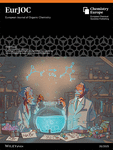Journal list menu
Export Citations
Download PDFs
Cover
Outside Front Cover: Boosting Current Density of Electrocatalytic CO2 Reduction using Metal-Enzyme Hybrid Cathodes (Angew. Chem. Int. Ed. 30/2025)
- First Published: 01 July 2025
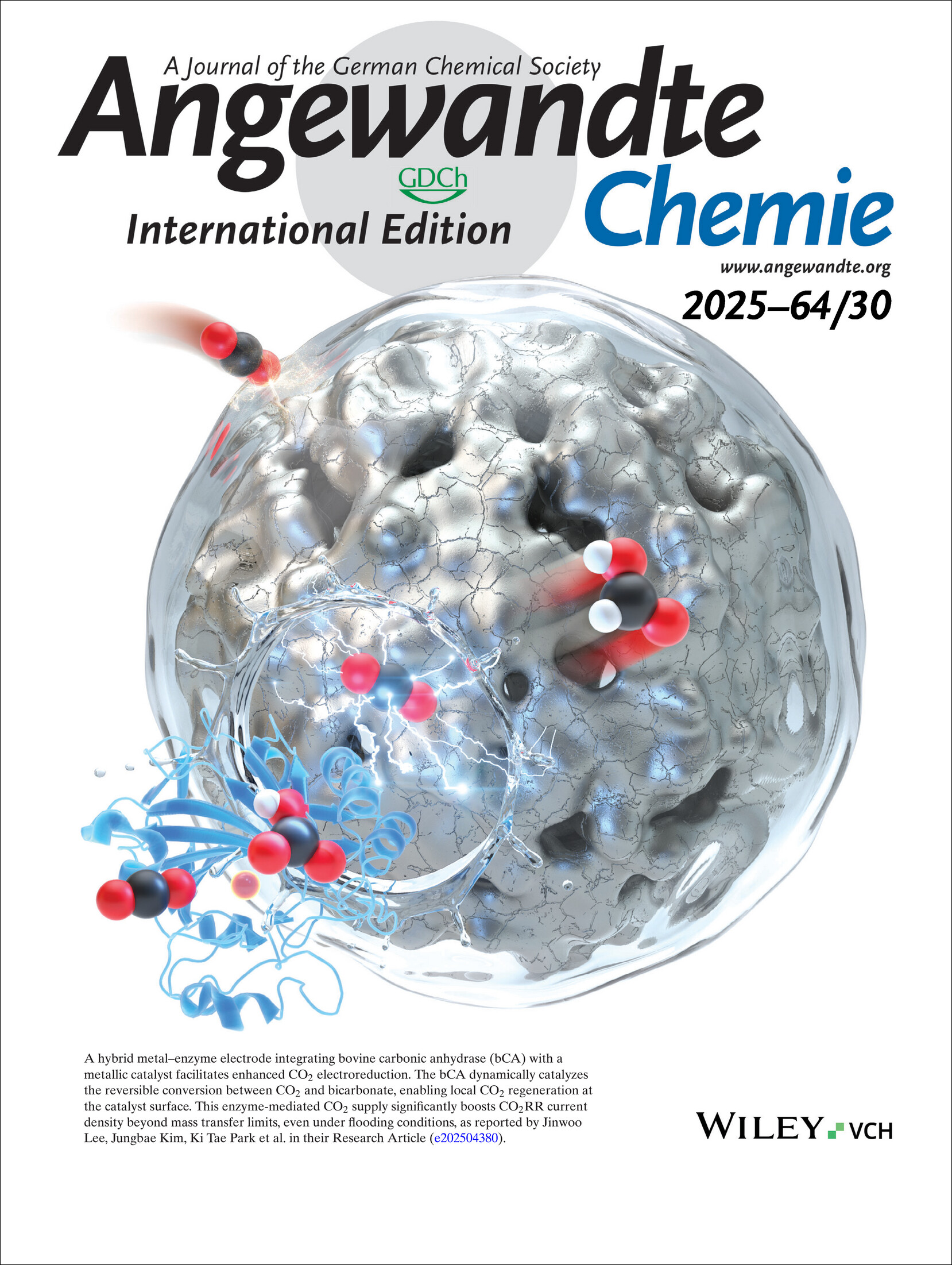
A hybrid metal–enzyme electrode integrating bovine carbonic anhydrase (bCA) with a metallic catalyst facilitates enhanced CO2 electroreduction. The bCA dynamically catalyzes the reversible conversion between CO2 and bicarbonate, enabling local CO2 regeneration at the catalyst surface. This enzyme-mediated CO2 supply significantly boosts CO2RR current density beyond mass transfer limits, even under flooding conditions, as reported by Jinwoo Lee, Jungbae Kim, Ki Tae Park et al. in their Research Article (e202504380).
Inside Front Cover: In-Situ Observation of Post-CO Intermediates to Decode C─C Coupling Pathways in CO2 Electroreduction (Angew. Chem. Int. Ed. 30/2025)
- First Published: 04 July 2025
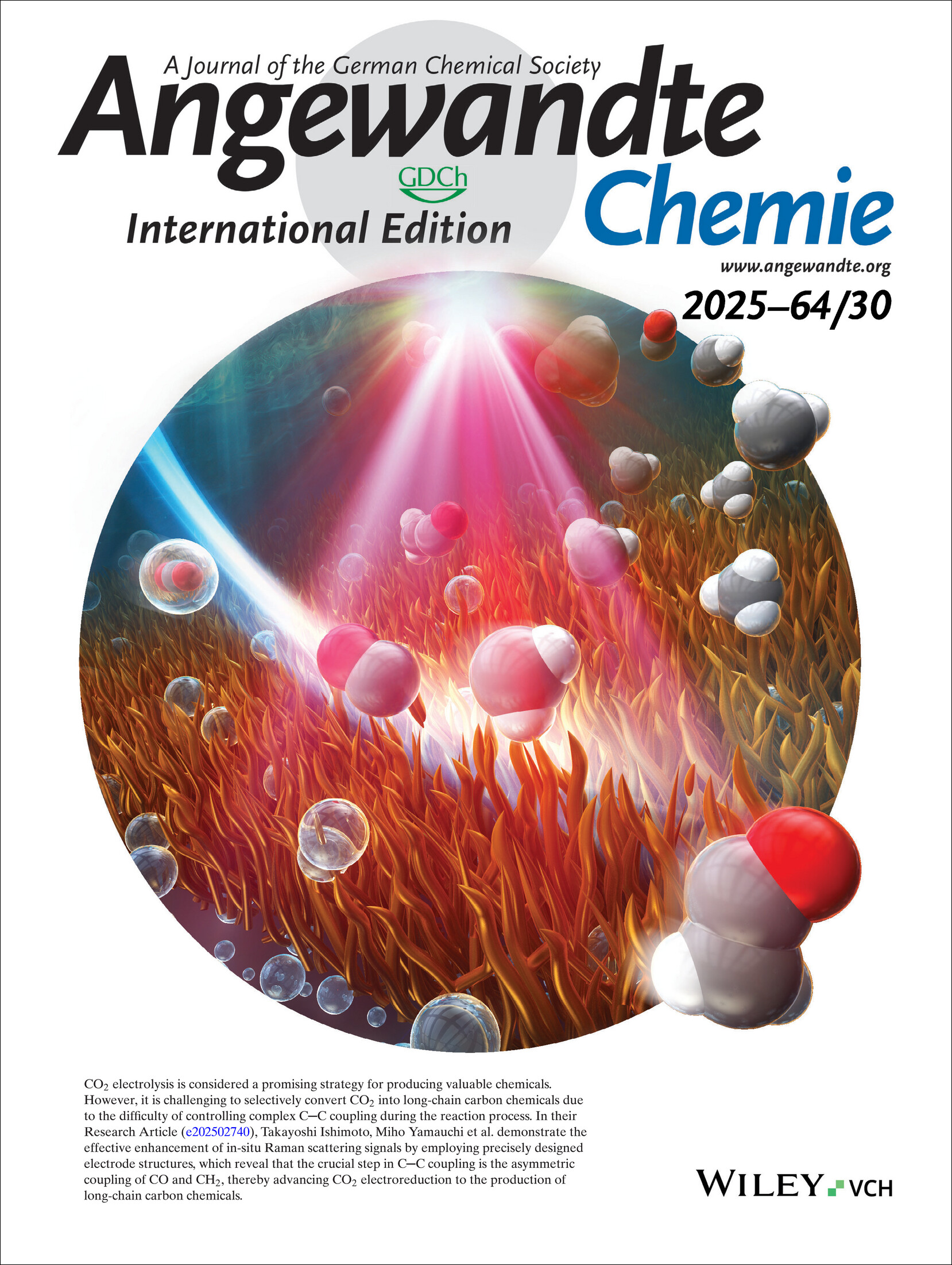
CO2 electrolysis is considered a promising strategy for producing valuable chemicals. However, it is challenging to selectively convert CO2 into long-chain carbon chemicals due to the difficulty of controlling complex C─C coupling during the reaction process. In their Research Article (e202502740), Takayoshi Ishimoto, Miho Yamauchi et al. demonstrate the effective enhancement of in-situ Raman scattering signals by employing precisely designed electrode structures, which reveal that the crucial step in C─C coupling is the asymmetric coupling of CO and CH2, thereby advancing CO2 electroreduction to the production of long-chain carbon chemicals.
Inside Back Cover: Dual-Responsive Ultrathin Polymersomes with Reversible Transitions on Acidochromism and Fluorochromism Performances for Multiple Information Encryption (Angew. Chem. Int. Ed. 30/2025)
- First Published: 26 June 2025
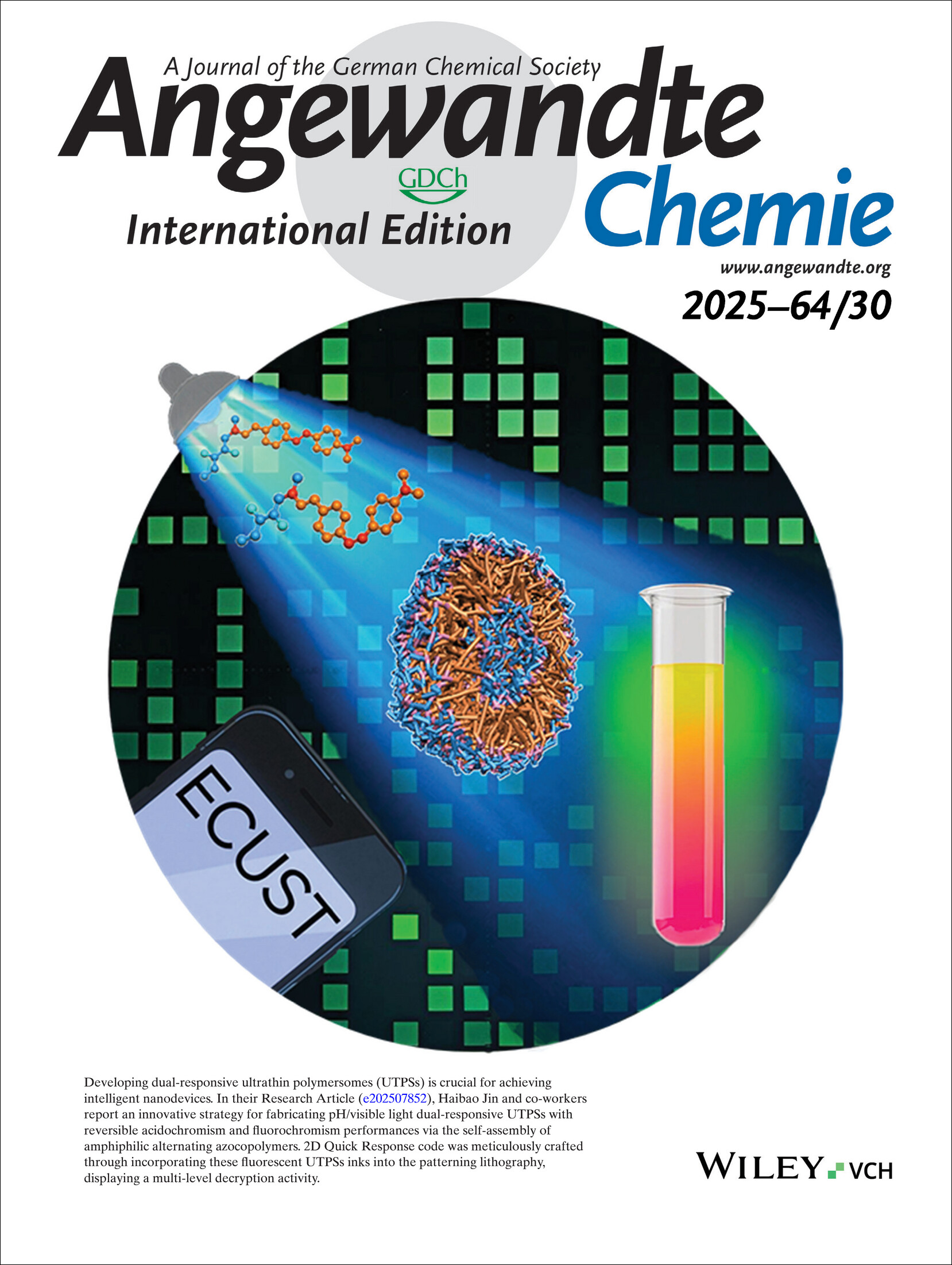
Developing dual-responsive ultrathin polymersomes (UTPSs) is crucial for achieving intelligent nanodevices. In their Research Article (e202507852), Haibao Jin and co-workers report an innovative strategy for fabricating pH/visible light dual-responsive UTPSs with reversible acidochromism and fluorochromism performances via the self-assembly of amphiphilic alternating azocopolymers. 2D Quick Response code was meticulously crafted through incorporating these fluorescent UTPSs inks into the patterning lithography, displaying a multi-level decryption activity.
Outside Back Cover: Molecular-Level Interface Engineering and Additive-Induced Crystallinity Tuning for High-Performance Thermally Conductive Polymer Composites (Angew. Chem. Int. Ed. 30/2025)
- First Published: 26 June 2025
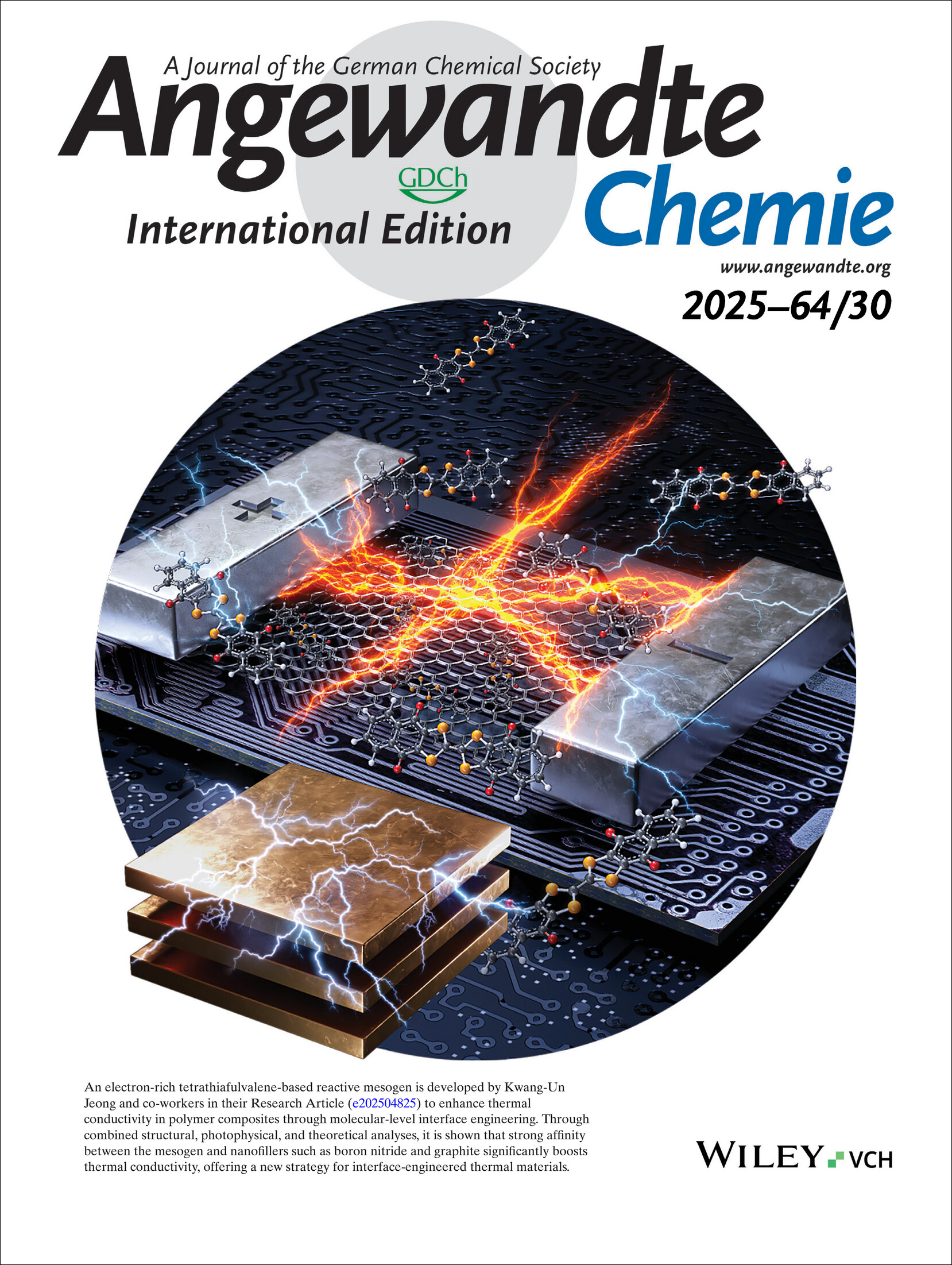
An electron-rich tetrathiafulvalene-based reactive mesogen is developed by Kwang-Un Jeong and co-workers in their Research Article (e202504825) to enhance thermal conductivity in polymer composites through molecular-level interface engineering. Through combined structural, photophysical, and theoretical analyses, it is shown that strong affinity between the mesogen and nanofillers such as boron nitride and graphite significantly boosts thermal conductivity, offering a new strategy for interface-engineered thermal materials.
Frontispiece
Frontispiece: Utilizing the Mn(II) Dissolution-Induced Vacancy for Optimum Mg2+ Storage of Spinel Mn3O4
- First Published: 22 July 2025
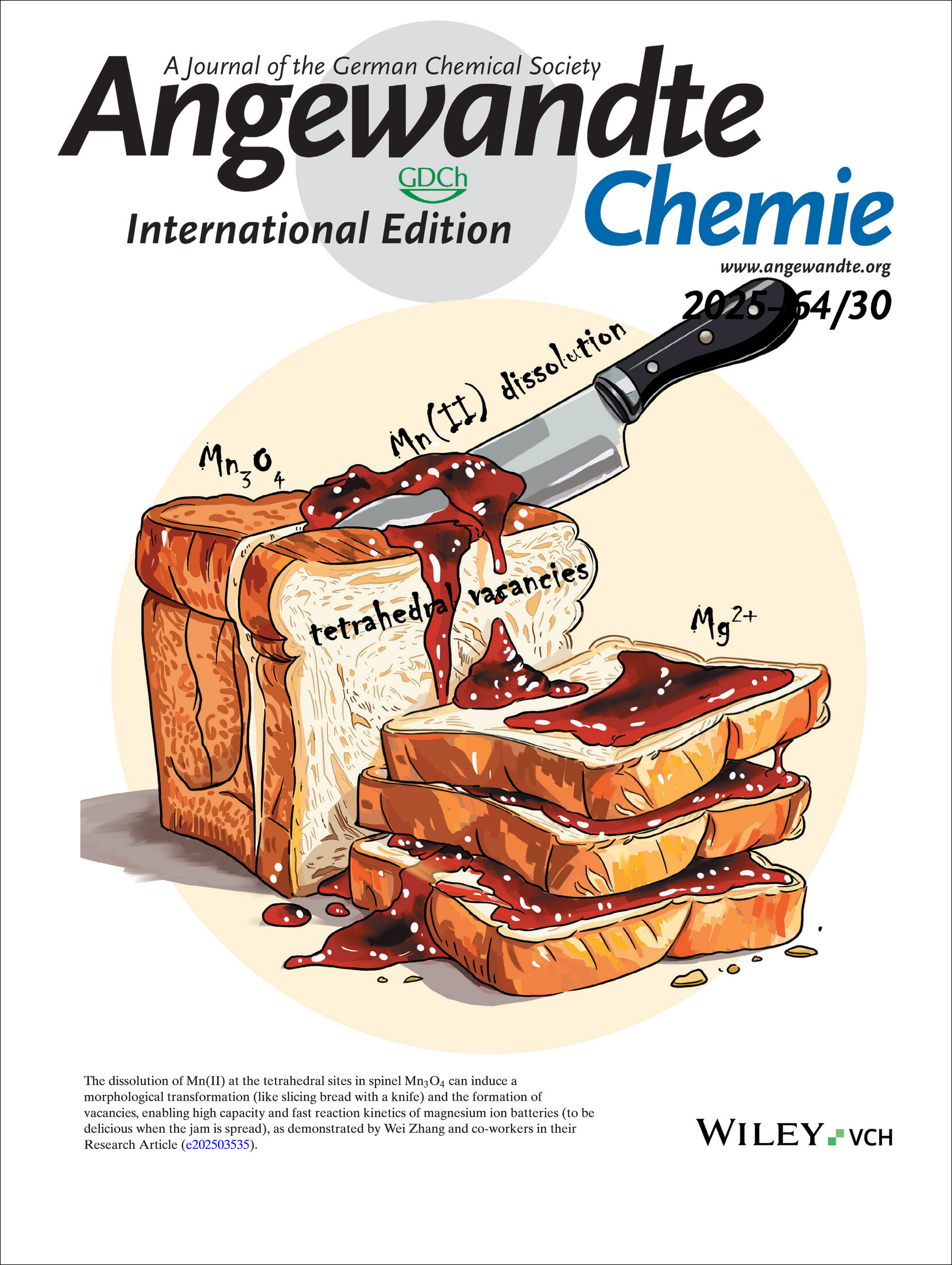
The dissolution of Mn(II) at the tetrahedral sites in spinel Mn3O4 can induce a morphological transformation (like slicing bread with a knife) and the formation of vacancies, enabling high capacity and fast reaction kinetics of magnesium ion batteries (to be delicious when the jam is spread), as demonstrated by Wei Zhang and co-workers in their Research Article (e202503535).
Frontispiece: Highly Enantioselective Organocatalysis with Bidentate Halogen Bond Donors
- First Published: 22 July 2025

Strike! A long-standing challenge was finally solved: achieving high enantioselectivity predominantly via halogen bonding (“XB”, see the red stitches) and on unbiased substrates. In their Communication (e202506476), Stefan M. Huber et al. describe the highly enantioselective catalysis of a Mukaiyama aldol reaction by bidentate halogen bond donors.
Introducing…
Durga Prasad Hari
- First Published: 23 June 2025

“My first experiment was the synthesis of paracetamol. I still remember that we dried the paracetamol on the rooftop… The most rewarding part of my job is watching my students generate their own research ideas and execute them with minimal input from me…”
Find out more about Durga Prasad Hari in his Introducing… Profile.
Correspondence
Mass Spectrometry
Correspondence on “Highly Selective Electrocatalytic 1,4-NADH Regeneration Based on Host–Guest Recognition Mediated by Cucurbit[8]uril on NiO”
- First Published: 17 June 2025
![Correspondence on “Highly Selective Electrocatalytic 1,4-NADH Regeneration Based on Host–Guest Recognition Mediated by Cucurbit[8]uril on NiO”](/cms/asset/315ff744-932e-4694-851f-b33a5823908d/anie202507113-gra-0001-m.jpg)
Ning et al., have reported a very interesting and promising electrochemical method of 1,4-NADH regeneration. The only part of this article that seems to be disputable is the reported mass spectrometry data, namely, the lack of specification of the employed LC-MS conditions, sometimes the wrong m/z values assigned to the species claimed to be identified, and the lack of the mass spectra of NADH.
Minireview
Photochemistry
Red-Light-Mediated Generation of Radicals: Applications in Organic Synthesis, Small-Molecule Activation, Polymerization, and Bio-Related Fields
- First Published: 30 April 2025
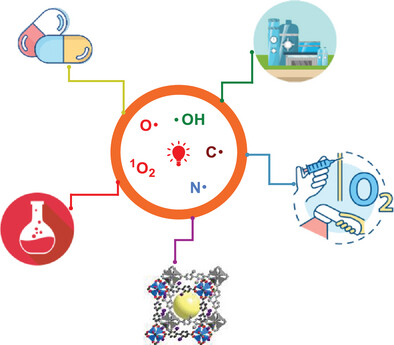
Visible light-driven photochemistry has advanced significantly, offering diverse methodologies in synthetic organic chemistry. Photocatalysis using red and near-infrared (NIR) light is particularly notable due to its lower energy, reduced phototoxicity, minimized side reactions, and deeper penetration into reaction media. This minireview summarizes recent developments in red- and NIR-mediated photocatalysis, emphasizing radical generation and reactive intermediates for organic synthesis. Applications in small-molecule activation, polymer chemistry, and biologically relevant transformations are discussed, highlighting the growing potential of these photochemical processes in fundamental and applied chemistry.
Photodynamic Agents
Rational Design of Type-I Photodynamic Agents
- First Published: 13 June 2025
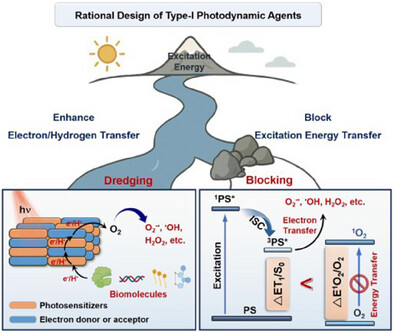
This Minireview offers a comprehensive overview of Type-I photodynamic therapy and outlines two design strategies for Type-I photodynamic agents: thermodynamic modulation through molecular engineering to block Type-II excitation energy transfer, and kinetic optimization of photoinduced electron/hydrogen transfer processes to enhance Type-I pathway.
Review
Porous Membranes
Emerging Porous Conductive Ion-Selective Membranes for Sustainable Energy Devices
- First Published: 28 May 2025
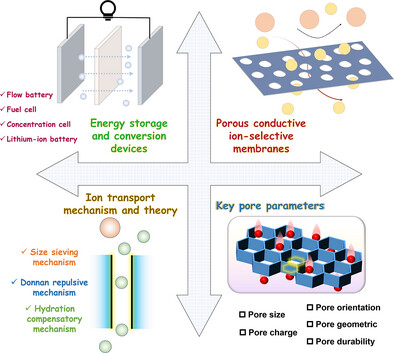
Porous conductive ion-selective membranes (PCIMs) enable low-resistance, high-selectivity ion transport in sustainable energy devices. This review explores emerging PCIMs with sub-nano/nanometer pores, focusing on ion transport mechanisms, key pore characteristics, and design strategies. It also highlights advances in PCIM applications, including fuel cells, flow batteries, and Li—S batteries. By integrating theory with design principles, this review provides insights for optimizing PCIMs and advancing membrane-based energy technologies.
Research Article
Magnesium-Ion Batteries
Utilizing the Mn(II) Dissolution-Induced Vacancy for Optimum Mg2+ Storage of Spinel Mn3O4
- First Published: 16 May 2025
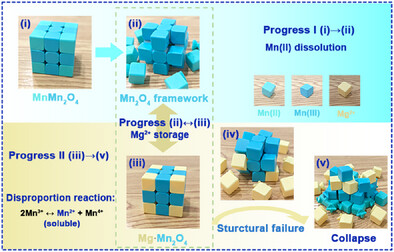
There are two significant factors necessary for the cathode materials of aqueous Mg-ion energy storage devices as follows: one is the storage mechanism of Mg2+ that can achieve enhanced Mg2+ diffusion kinetics and bring higher power density; the other is the high structural stability to achieve long lifespan. The tetrahedral vacancy reversible insertion/extraction mechanism by Mn(II) dissolution and optimize the integrity of the spinel framework is a powerful strategy to achieve Mg2+ energy storage system with high rate performance and long lifespan.
CO2 Electroreduction | Very Important Paper
In Situ Observation of Post-CO Intermediates to Decode C─C Coupling Pathways in CO2 Electroreduction
- First Published: 07 May 2025
Responsive Ultrathin Polymersomes | Very Important Paper
Dual-Responsive Ultrathin Polymersomes with Reversible Transitions on Acidochromism and Fluorochromism Performances for Multiple Information Encryption
- First Published: 21 May 2025

Visible light/pH dual-responsive ultrathin polymersomes (UTPSs) with reversible stimuli-chromic characteristics were fabricated through self-assembly of side-chain-type amphiphilic alternating azocopolymers, displaying reversible shape transitions, repeatable acidochromism from yellow to pink, and fluorochromism performance. The proof-of-concept multilevel-decrypted 2D QR code using dual-responsive UTPSs into patterning lithography proved the potential on multiple information encryption.
Polymer Chemistry | Hot Paper
Molecular-Level Interface Engineering and Additive-Induced Crystallinity Tuning for High-Performance Thermally Conductive Polymer Composites
- First Published: 06 May 2025
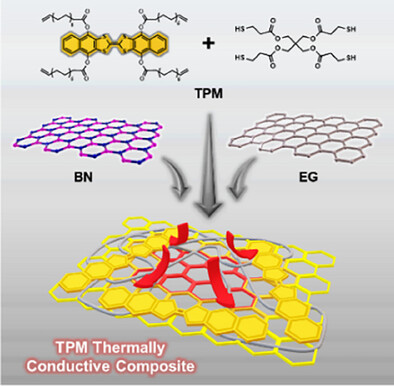
A tetrathiafulvalene-based reactive mesogen (TRM) is used to develop a TRM polymer matrix (TPM) with excellent thermal conductivity and interfacial affinity with boron nitride (BN) and expanded graphite (EG). Fabricated TPM composites, which are thermally and chemically stable, can be selectively used for electrical insulation, conduction, and electromagnetic interference (EMI) shielding.
Dynamic Polyester
Kinetically Enhanced Access to a Dynamic Polyester Platform via Sequence Selective Terpolymerisation of Elemental Sulphur
- First Published: 10 April 2025
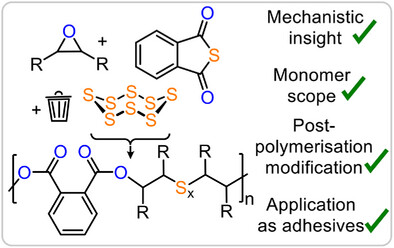
A rare sequence-selective terpolymerisation of elemental sulphur, aromatic thioanhydrides, and epoxides yields dynamic poly(ester-alt-Sx) polymers. Mechanistic insights reveal a lithium-catalysed rate enhancement via ester coordination. The resulting polymers are thermally stable, backbone-editable, and processable into degradable adhesives.
Photocatalysis | Very Important Paper
Highly Efficient and Selective Photocatalytic CO2 Reduction to Ethanol by Cu4 Clusters with Adjacent Cu Single Atoms Anchored on Carbon Nitride
- First Published: 18 April 2025
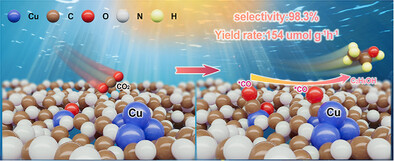
A catalyst composed of Cu4 clusters and adjacent Cu single atoms anchored on carbon nitride was prepared via a two-step calcination process. The synergistic effect between Cu4 clusters and Cu single atoms could lower the C─C coupling energy barrier and make it one of the most efficient catalysts for CO2 to ethanol via photocatalysis.
Polyzwitterionic Hydrogels
Scalable Preparation of Polyzwitterionic Hydrogels Based on Hydration Shielding-Accelerated Redox Self-Catalytic Polymerization (HS-A-RP)
- First Published: 15 April 2025
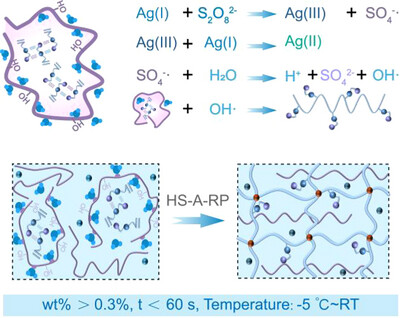
Hydration-shielding accelerated self-catalytic polymerization (HS-A-RP) method was first developed for implementing the fast preparation of robust polyzwitterionic hydrogels (PZHs) without external energy at low monomer concentration. HS-A-RP shows attractive applications in scalable manufacture of PZHs coatings on diverse substrates, in situ encapsulation of thermally sensitive materials, as well as excellent sand fixation ability.
2D Polymers
Hopping-Type Charge Transport in Controllably p-Doped Polaronic Two-Dimensional Polymers
- First Published: 14 April 2025
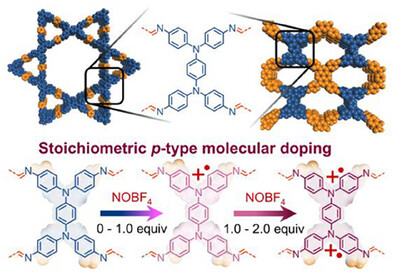
This report explores polaron-based charge transport in controllably p-type doped 2D polymers. Substoichiometric injection of holes in 2DP lattices leads to the lowest optical bandgaps and maximal electronic conductivities. Variable-temperature conductivity reveals the existence of hopping-type transport with two distinct Arrhenius regimes, which may be related to in-plane and cross-plane directional electronic transport.
3D Printing under Visible Light | Hot Paper
Photoredox Catalysts Based on N-(Hexyl)benzothioxanthene-3,4-dicarboximide for Photopolymerization and 3D Printing Under Visible Light
- First Published: 14 April 2025
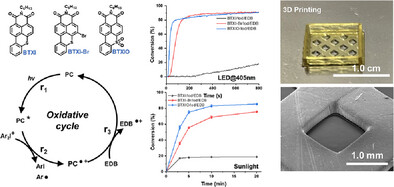
In this work, two benzothioxanthene imide dyes demonstrate excellent photochemical properties. When used as photocatalysts, they work with amine and iodonium salt or sulfonium salt to form different three-component systems for effectively initiating photopolymerization under visible light, through photoredox catalysis processes. The best formulations can be applied for 3D printing and direct laser write. This work offers a strategy for developing novel photosensitive dyes as photocatalysts.
PEM Water Electrolyzer
Proton-Conducting, Vacancy-Rich HxIrOy Nanosheets for the Fabrication of Low-Ionomer-Dependent Anode Catalyst Layer in PEM Water Electrolyzer
- First Published: 13 April 2025
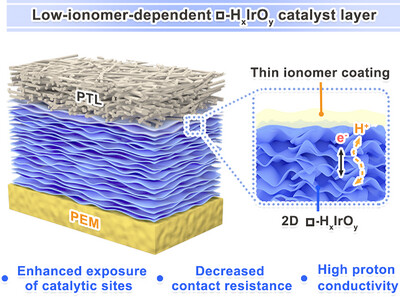
Cation vacancies-rich, 1 nm-thick □-HxIrOy nanosheets with both high catalytic activity and high protonic conductivity have been prepared. This bifunction integration enables the fabrication of a low-iridium-loading, low-ionomer-dependent catalyst/ionomer layer for efficient proton exchange membrane water electrolysis.
Photo-Rechargeable Sodium Batteries
Photogenerated Holes Induced Deep Sodium Storage of TiO2/CdSe/NFPP Cathode for High-Efficiency Photorechargeable Sodium Batteries
- First Published: 15 April 2025
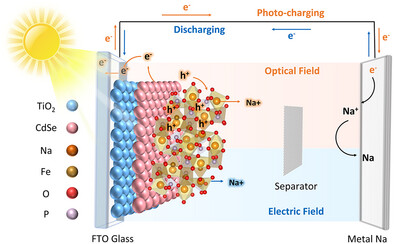
Dual-functional TiO2/CdSe/NFPP cathode was designed for photorechargeable sodium batteries. Photogenerated holes from CdSe migrate to NFPP, facilitating efficient sodium deintercalation. The holes-absorbed film-forming agent FEC on NFPP causes a thin NaF-rich cathode electrolyte interphase, which effectively suppresses electron tunneling and electrolyte decomposition. The PRSBs deliver high capacity and conversion efficiency (4.34%).
All-Solid-State Lithium Metal Batteries
Multivariate Distribution Structured Anisotropic Inorganic Polymer Composite Electrolyte for Long-Cycle and High-Energy All-Solid-State Lithium Metal Batteries
- First Published: 14 April 2025
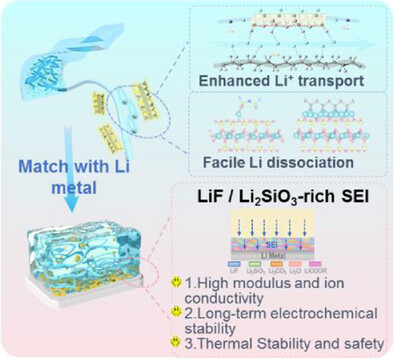
A composite solid-state electrolyte with multivariate distribution anisotropic structure was developed. Parts of the vermiculite sheets suspended among the PVDF matrix facilitate lithium salts dissociation and form fast Li+ transport channels. Other parts of vermiculite sheets tiled on electrolyte surface generate dense and high-modulus Li2SiO3-rich solid electrolyte interphase, improving the interfacial kinetics and suppressing the dendrite growth.
Ni-Rich Cathodes
Mechanically and Chemically Co-Robust Ni-Rich Cathodes with Ultrahigh Capacity and Prolonged Cycle Life
- First Published: 16 April 2025
Artificial Intelligence for Batteries | Very Important Paper
Uni-Electrolyte: An Artificial Intelligence Platform for Designing Electrolyte Molecules for Rechargeable Batteries
- First Published: 16 April 2025
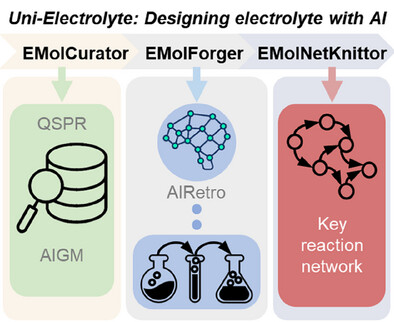
An artificial intelligence platform, namely Uni-Electrolyte, was constructed to design electrolyte molecules for rechargeable batteries. The Uni-Electrolyte includes three parts, i.e., EMolCurator, EMolForger, and EMolNetKnittor, which can design new molecules, predict their retrosynthesis pathways and reaction conditions, and predict the chemical mechanism to produce a solid electrolyte interphase, respectively.
Quantum Dots
In Situ Studies of Multi-Carrier Dynamics in Electrochemically-Charged Colloidal CdSe/CdS Core/Shell Quantum Dots
- First Published: 16 April 2025
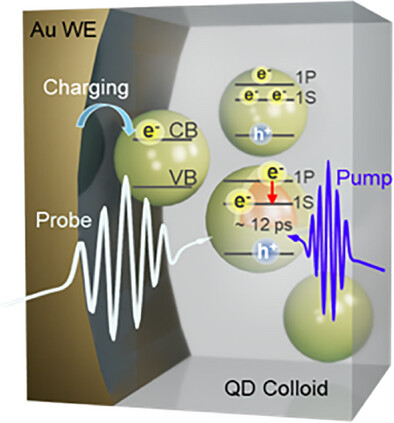
Electrochemically charging colloidal nanocrystals (NCs) enables the study of the intrinsic multi-carrier dynamics in quantum dots (QDs) by in situ ultrafast time-resolved spectroscopy, revealing the spin blockade effect and phonon bottleneck effect for hot electron cooling and allowing mechanism studies of charged QDs in various applications.
Photothermal Catalysis
Tailoring Oxygen Vacancies with Atomically Dispersed Cu Sites for Stable and Efficient Photothermal CO2 Conversion
- First Published: 15 April 2025
Bioinorganic Chemistry | Hot Paper
Structural Insight Into a Human H Ferritin@Gold-Monocarbene Adduct: Aurophilicity Revealed in a Biological Context
- First Published: 18 April 2025
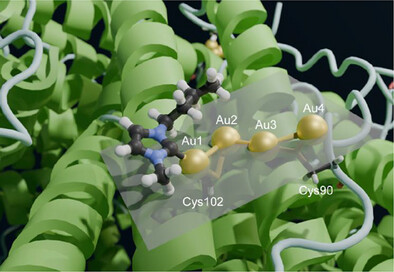
Human H ferritin (HuHf) is a nanocarrier for anticancer metal drugs. By cryo-EM, a 1.51 Å structure of its adduct with Au(NHC)Cl was solved, showing a novel tetranuclear gold(I) cluster bound to Cys90 and Cys102. Short inter-metal distances indicate aurophilic interactions. This study highlights the power of cryo-EM in examining metal-drug–protein interactions using the strong signal of transition metal ions.
Tumor Therapy
Functional Dendrimer Nanogels for DNA Delivery and Gene Therapy of Tumors
- First Published: 17 April 2025
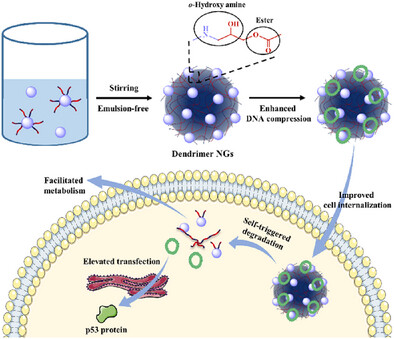
Dendrimer nanogels are designed by emulsion-free method, endowing them with dual-active groups, o-hydroxyl amine, temperature-responsiveness, polyampholyte property, and self-triggered aminolysis. With these unique characters, dendrimer nanogels display high gene transfection and therapeutic efficacies with low side effects, thus solving the dilemma between efficacy and cytotoxicity of conventional cationic colloidal vectorsin gene delivery.
Lithium–Sulfur Batteries | Hot Paper
Supramolecularly Confined Catalysis in Polyphthalocyanine-Crown-Ether Frameworks Boosts Sulfur Redox Kinetics
- First Published: 15 May 2025
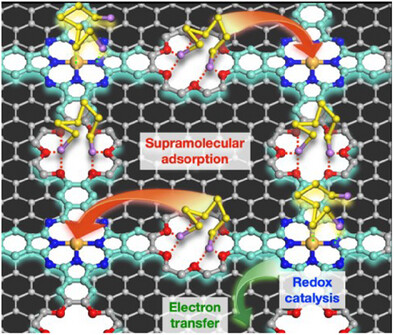
Here we report flexible, two-dimensional polyphthalocyanine-crown-ether frameworks coating on carbon nanotubes, which not only serve as supramolecularly confined catalysts in lithium–sulfur chemistry but also suppress the growth of lithium dendrites. This newly designed catalysts achieve the long-term cycling operation of lithium–sulfur batteries with a tiny capacity decay rate of 0.711‰ per cycle. Our design strategy can be potentially applied to a wider spectrum of electrochemical catalysis.
Antibacterial Therapy
H2S Donor Functionalized Molecular Machine for Combating Multidrug-Resistant Bacteria Infected Chronic Wounds
- First Published: 15 May 2025
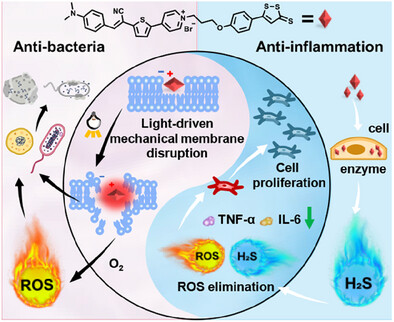
A novel H2S donor functionalized molecular machine, ACR-DM-HS, with combination of antibacteria and anti-inflammation to accelerate angiogenesis through membrane disruption, ROS generation, and H2S releasing was developed for synergistic therapy of multiple resistant bacteria-infected chronic wound, which offers a promising treatment approach for combating bacterial multidrug resistance and tackling chronic wounds.
Cluster Compounds | Hot Paper
Structural Origin of Spin-Orbit Splitting of 1P Orbitals of Icosahedral Au13 Superatom Protected by Ligands
- First Published: 19 May 2025
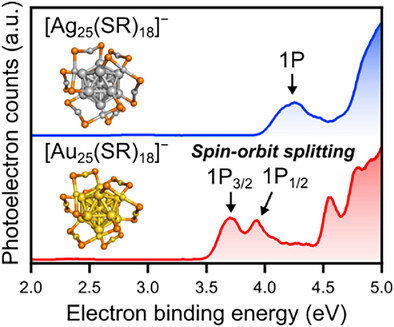
The spin-orbit (SO) splitting of the superatomic 1P orbitals in thiolate-protected Au13 superatoms were investigated. Cryogenic anion photoelectron spectroscopy and fully relativistic calculation including SO coupling revealed the 1P orbitals of the Au13 and Au@Ag12 superatomic cores undergo SO splitting, while not in the Ag13 core.
Perovskite Solar Cells | Hot Paper
Employment of l-Citrulline as an Effective Molecular Bridge for Regulating the Buried Interface of Perovskite Solar Cells to Achieve High Efficiency and Good Stability
- First Published: 19 May 2025
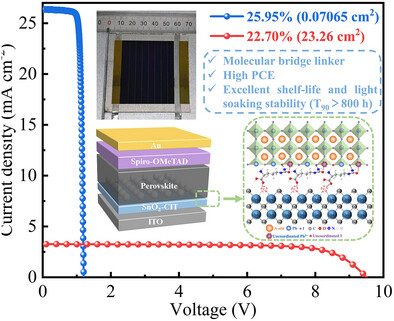
l-Citrulline (CIT), with amino acid end groups (─COOH, ─NH2) and a urea end group (─NH─CO─NH2), functions as a molecular bridge to modulate the SnO2/perovskite buried interface. The optimized PSC device (0.07065 cm2) achieved an impressive champion PCE of 25.95%. The solar module with an active area of 23.26 cm2 achieved a PCE of 22.70%, which is one of the highest values reported recently using the slot-die coating method. The strategy offers valuable insights to advance the industrialization of large-area devices.
Nanometric Aggregates
Ultrahigh-Voltage Lithium Metal Batteries Enabled by Single-Ion and Weakly-Solvating Nanometric Aggregates
- First Published: 19 May 2025
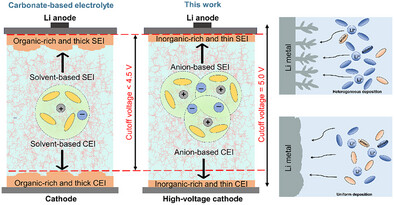
The table of contents (TOC) figure provides a visual overview of the key innovations and findings of this study on high-voltage lithium metal batteries (LMBs). The single-solvent electrolyte composed of 2.3 M lithium salt in tris(2,2,2-trifluoroethyl)phosphate (TFEP), which enables stable LMB operation at ultra-high voltages up to 5.0 V. The electrolyte forms large weakly-solvating nanometric aggregates (n-AGG), which contribute to enhanced oxidative stability and facilitate efficient redox reactions. Notably, the electrolyte exhibits exceptional cycling stability for over 1500 h, effectively suppressing dendrite formation and demonstrating strong compatibility with high-voltage cathodes, such as NCM811 and LiNi0.5Mn1.5O4 (LNMO). The improved thermodynamic and kinetic stability of the electrolyte significantly enhances the high-voltage tolerance and cycling performance of LMBs, offering promising prospects for the development of next-generation energy storage technologies.
Batteries
Designing Low-Cost High-Conductivity and Nonflammable Phosphate Electrolytes Toward High-Energy Sodium-Ion Batteries
- First Published: 15 May 2025
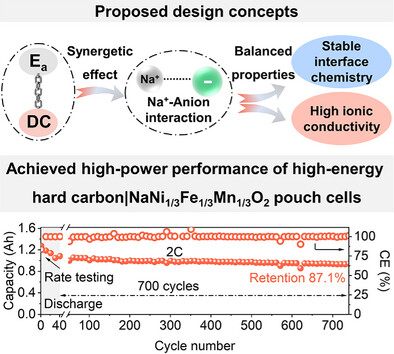
Evaluating the synergetic effect of dielectric constant (DC) and binding energy (Ea) of solvents on the interaction between Na+ and anion balances stable interfacial chemistry and high ionic conductivity in non-flammable phosphate electrolytes. Developed electrolytes enable high-energy pouch cell achieving a capacity retention of 87.1% after 700 cycles at the current density of 2C.
Excited States | Hot Paper
Palladium-Catalyzed Alkyl Amination of Olefins via Radical-Polar Crossover at Room Temperature
- First Published: 19 May 2025

We disclosed a palladium-catalyzed tandem radical Heck/allylic amination of α-bromoamides with 1,3-butadienes and enynes at room temperature to yield γ-lactams. Unlike previous alkyl Heck reactions, this transformation generates hybrid alkyl Pd(I)-radical and a transposed π-allyl Pd(I)-radical under ambient conditions.
Radiotherapy
Au6Cu2 Clusters with High Electron Affinity and Oxygen-Mimetic Properties for Hypoxic Tumor Radiosensitization
- First Published: 19 May 2025
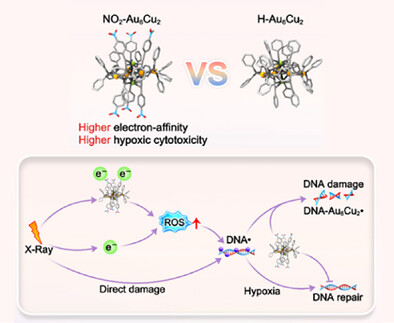
[Au6Cu2(C2C6H4X)6(PPh2C6H4PPh2)3]2+ (X = NO2, denoted as NO2-Au6Cu2; X = H, denoted as H-Au6Cu2) clusters were synthesized for radiosensitizing studies. The NO2-Au6Cu2 nanoparticles demonstrated significantly enhanced radiosensitization compared to the H-Au6Cu2 nanoparticles, attributed to their higher electron affinity, which increases hypoxic cytotoxicity and mimics the oxygen effect by reacting with DNA free radicals.
Single-Atom Catalysts | Hot Paper
Proton Driving Mechanism Revealed in Sulfur-Doped Single-Atom FeN2O2 Carbon Dots for Superior Peroxidase Activity
- First Published: 19 May 2025
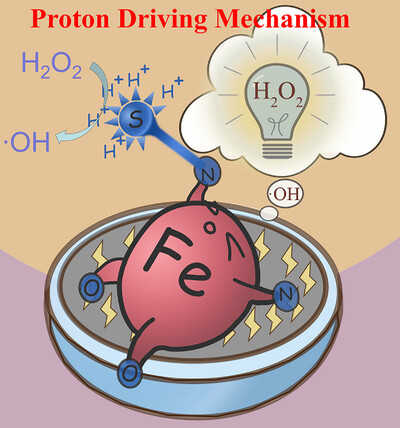
This study reveals that sulfur doping in FeN2O2 single-atom carbon dots induces a proton driving mechanism, significantly enhancing peroxidase-like activity. This mechanism facilitates H2O dissociation and proton transfer, providing an ample supply of H* for the conversion of H2O2 to·OH, as verified through KIE, in situ experiments, and DFT calculations.
Electrochemistry | Hot Paper
Deconstructive Functionalization of Cyclic Ketones via Electrochemical Interrupted Dowd–Beckwith Reaction
- First Published: 19 May 2025
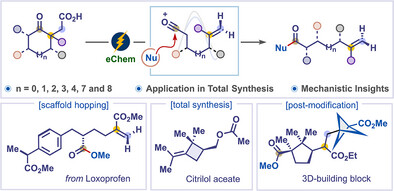
Interrupted Dowd–Beckwith (IDB) reaction enables the highly regioselective deconstructive functionalization of cyclic ketones using electricity as the sole oxidant. This strategy transforms complex cyclic ketones into acyclic molecules and has been applied to the asymmetric synthesis of planococcol, citrilol acetate, maconelliol, and its derivatives. Mechanistic studies support an oxidative radical-polar crossover.
Ionic Covalent Organic Framework
π-Bridge-Linked Ionic Covalent Organic Framework with Fast Reaction Kinetics for High-Rate-Capacity Lithium-Ion Batteries
- First Published: 19 May 2025
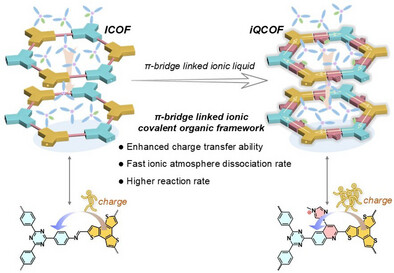
A new ionic quinoline-linked COF (iQCOF) was synthesized by combining π-bridge and charge-introduction strategy via a one-pot Povarov reaction. The π-bridge-linked ionic liquid endow iQCOF enhanced charge transfer ability, fast ionic atmosphere dissociation rate, and higher reaction rate. Thereby, it can be regarded as advanced COF-based cathodes with rapid kinetics to achieve high-rate performance and long-term stability.
Polycyclic Aromatic Hydrocarbons
Stabilizing the Quinoidal Form of Polycyclic Aromatic Hydrocarbons by O─B←N Units to Give a > 1000 nm Redshift in the Absorption Wavelength
- First Published: 19 May 2025
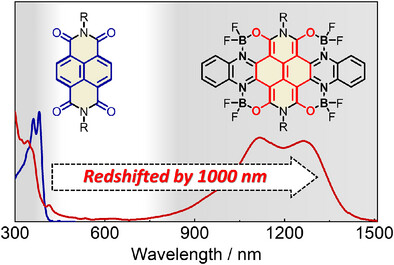
By incorporating four O─B←N units into naphthalene diimide, the core is transformed from an aromatic form to a quinoidal form, significantly enhancing π-electron delocalization. This results in a reduced bandgap from 3.10 to 0.88 eV and a redshift in absorption from 400 to 1410 nm. The synthesized polycyclic aromatic hydrocarbon exhibits strong SWIR absorption and high transparency in the visible region, developing a colorless anti-counterfeiting application.
Urea Synthesis | Hot Paper
Air-Level Oxygen Enables 100% Selectivity in Urea Synthesis via Photocatalytic C─N Coupling of CO and Ammonia
- First Published: 19 May 2025
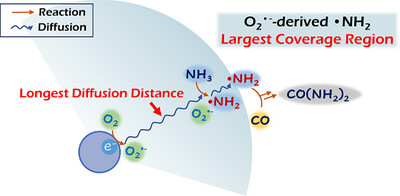
The photocatalytic coupling reaction of carbon monoxide and ammonia pays a new pathway for urea synthesis under mild conditions. Herein, we proposed a universal O2-mediated urea generation pathway via the O2•– radicals act as the dominant active species to drive the mild NH3 oxidation to •NH2 radicals, which then coupled with CO as the crucial step for urea production.
Electrocatalysis | Hot Paper
Selective Electrocatalytic Hydrodimerization of Acetylene to 1,3-Butadiene Over Neighboring Cu Dual Sites
- First Published: 19 May 2025
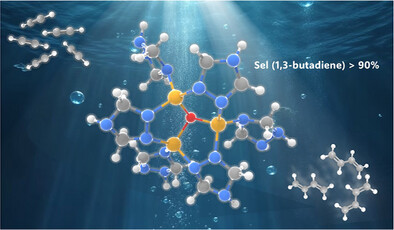
Electrochemical acetylene hydrodimerization mechanisms are deciphered by correlating the nuclearity of Cu site in Cu-MOFs with catalytic performance. The neighboring Cu dual sites in trinuclear Cu3-MOF orchestrate three critical steps: acetylene adsorption, C–C coupling of *C2H2 and *C2H3 intermediates, and 1,3-butadiene desorption, which contribute to the superior electrocatalytic selectivity of 1,3-butadiene.
Enantioselectivity | Very Important Paper
Dynamic Hydrogen Bonding Tuned Enantioselectivity Control in Cobaloxime-Chiral Amine Cooperative Catalysis
- First Published: 16 May 2025
Perovskite Solar Cells
Fluorination-Assisted Interfacial Dipole for CsPbI3 Perovskite Solar Cells with Over 22% Efficiency
- First Published: 19 May 2025
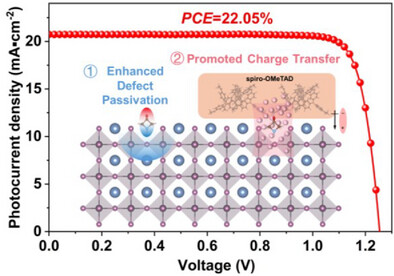
Fluorination-assisted interfacial dipole engineering is conducted for inorganic CsPbI3 PSCs, which could not only form more robust interfacial contact but also beneficial dipole alignment, leading to effective passivation and prominent energy level adjustment with additional charge transport channels, thus substantially suppressing interfacial energy losses. Consequently, the PSCs show an efficiency of up to 22.05% with superior device stability.
Plasmonic Imaging
Plasmonic DNA-Barcoded Virion Nano-Oscillators for Multiplexed Quantification of Small-Molecule Binding Kinetics to Membrane Proteins
- First Published: 19 May 2025

Multiplexed quantification of small-molecule binding kinetics to virion-displayed membrane proteins via charge-sensitive, wide-field plasmonic imaging of barcoded nanocomposite oscillators. Virion display maintains native membrane protein environments. Affinity-resolved multistate DNA barcoding efficiently addresses individual nano-oscillators and enables measurement of a library of G protein-coupled receptors on a single chip.
PET Upcycling | Hot Paper
Atomic Cu–O–Zr Sites for Highly Selective Production of p-xylene from Tandem Upcycling of PET and CO2
- First Published: 19 May 2025
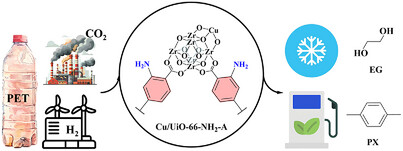
A heterogeneous catalyst Cu/UiO-66-NH2-A with atomic Cu–O–Zr sites was successfully developed at ambient temperature and pressure, which not only exhibits efficient activation of C═O and H─H bonds but also possesses a fast hydrogen spillover effect. These properties endow this catalyst with superior catalytic activity for the upcycling of waste PET and CO2 into p-xylene (PX) and ethylene glycol (EG).
Polymer Chemistry | Hot Paper
Blocky Selective Postpolymerization C–H Functionalization of Polyolefins
- First Published: 21 May 2025
Biomass Conversion | Hot Paper
Unlocking Precision in Biomass Conversion Through Functional Ligand Engineering of Lewis Acidic MOFs
- First Published: 19 May 2025

Through a strategic combination of sulfo-functionalized ligands and terephthalic acid, UiO-66-based catalysts with tunable Lewis acidity were synthesized, where the specific chemical state of each sulfo group served as a critical regulator of catalytic activity in glucose isomerization. This precise control enabled unambiguous correlation between acid site characteristics and reaction performance.
Electrochemical CO2 Reduction
Covalent Elaboration of Confined Surfaces Steers C─C Coupling Pathway for Selective Electrochemical CO2 Reduction at Ampere-Level
- First Published: 19 May 2025
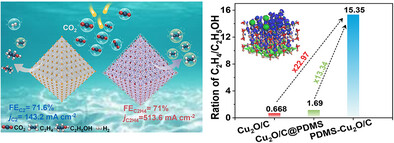
A novel gasphilic Cu2O nanoparticle dispersed within the hierarchically porous carbon matrix as a high-efficiency CO2RR electrocatalyst switches in the reaction pathways from ethanol to ethylene during CO2RR at ampere-level current, depending on the multiscale microenvironment engineering. The Faradaic efficiency (FE) of ethylene achieved is as high as ∼71% with a partial current density of 513.6 mA cm−2.
Wastewater Treatment | Hot Paper
Self-Activated Heterogeneous Fenton Process for Accelerated Degradation of Aromatic Pollutants over Copper Oxide Catalysts
- First Published: 19 May 2025
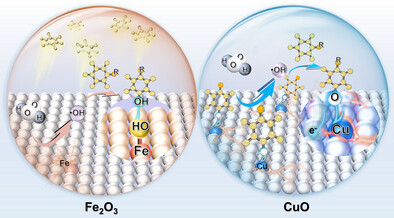
This study reports an unusual phenomenon of pollutant-induced activity enhancement of CuO for H2O2 activation and self-accelerated pollutant degradation, contrasting the performance decay of Fe2O3 catalyst. CuO can stabilize and activate phenol via ligand-to-metal charge transfer, generating surface-bound phenoxyl radicals to further mediate the H2O2 activation and meanwhile yielding low-valent Cu. This offers opportunities for simultaneously addressing the catalyst passivation and redox cycling limitations of heterogeneous Fenton-like catalysis.
Allylboration
HFIP-Promoted E-selective Asymmetric Crotylboration of Quaternary α-Silyl Crotylboronate with Aldehydes
- First Published: 19 May 2025
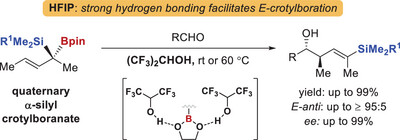
Hexafluoroisopropanol (HFIP)—a polar alcoholic solvent that has been underutilized in allylboration—enables otherwise challenging (E)-selective crotylboration of enantioenriched quaternary α-silyl crotylboronates with aldehydes. HFIP's strong hydrogen bonding effect increases the Lewis acidity of the boron center and the steric effect of Bpin, resulting in high yields and (E)-selectivity.
Covalent Organic Frameworks | Very Important Paper
Enantioselective Immobilization of Nonprecious Metal Complexes on Chiral Covalent Organic Frameworks for Improved Single-Site Photocatalytic Hydrogen Evolution
- First Published: 19 May 2025
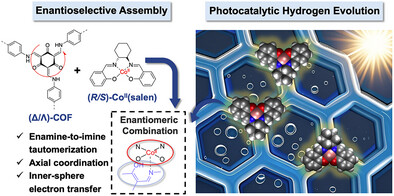
Enantioselective immobilization of chiral Co(salen) complexes on the surface of chiral β-ketoenamine-linked COFs enables axial coordination of Co(II) centers with COF linkages, which tautomerize from keto-enamine to enol-imine upon binding. This enantiomeric assembly enhances Co(II) reducibility and allows for inner-sphere electron transfer, leading to remarkable photocatalytic H₂ evolution without additional precious metals.
Covalent Organic Frameworks
Modulating the Polarity of Imine Bonds in Donor–Acceptor Covalent Organic Frameworks for Enhanced Photocatalytic H2 Production
- First Published: 19 May 2025
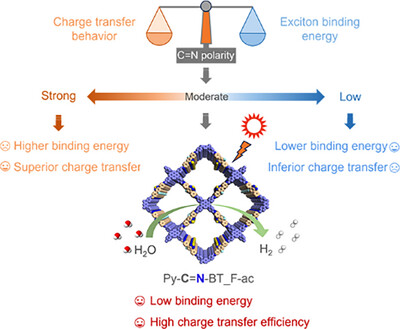
Tuning the polarity of imine (C═N) bonds in donor–acceptor covalent organic frameworks (COFs) with fluorinated units balances exciton binding and charge separation. A moderate C═N polarity delivers optimal H₂ evolution (14.0 mmol h⁻¹ g⁻¹), offering insights into polarity–performance relationships in COF photocatalysts.
Electrocatalytic CO2 Reduction
Selective C2 Electroproduction via Back Bonding in Asymmetric Copper-Copper Motifs
- First Published: 20 May 2025

Asymmetric CuF-CuN motifs were engineered through the in situ isostructural substitution method on F-Cu3N substrates. Unlike the isolated 3dz2-2pz σ bonding between CuN and the *C1 intermediate, CuF establishes an additional 3dxz-2pz π back bonding interaction. This synergy induces a charge-polarized 2*CHO adsorption configuration, concurrently enhancing coupling kinetics and C2 selectivity through dipole-dipole interactions.
Bioinorganic Chemistry
Electronically Asynchronous Transition State Tuned from Remote Site for Oxygen Atom Transfer by CuII–Nitrite Complexes
- First Published: 23 May 2025
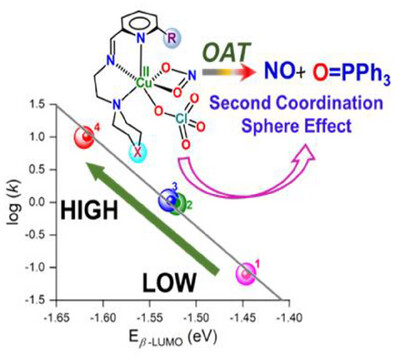
This work demonstrates the occurrence of electronically asynchronous transition state in oxygen atom transfer (OAT) reaction by CuII–NO2− complexes (1−4) controlled from remote site. OAT reactivity was found to be linearly correlated with β-LUMO and Cu(II)/(I) redox potentials, which were tuned from remote site substituents. Mechanistic study indicates asynchronous electron transfer mechanism where CuII/I reduction precedes nitrite reduction.
Protein Analysis
One-Step Enrichment and Quantitative Analysis of In Vivo Protein Complexes via Dimethylpiperidine Cross-Linker DPST
- First Published: 19 May 2025
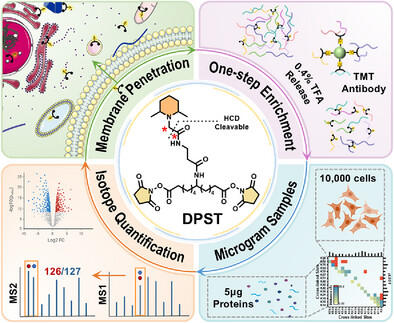
2,6-Dimethylpiperidine disuccinimidyl tridecanoate (DPST), an enrichable and quantifiable cross-linker, offers the advantages of membrane permeability and biocompatibility. It enables one-step enrichment of cross-linked peptides via tandem mass tag (TMT) antibody, minimizing sample loss and enabling in vivo cross-linking mass spectrometry (XL-MS) analysis of 1E4 cells. The isotope labeling feature of DPST ensures precise quantification in dynamic environments. With its flexible design supporting various isotope labeling configurations (6/10-plex), DPST holds significant promise for advancing biomedical research.
Photon Upconversion
Vibronic Trimer Design Enhancing Intramolecular Triplet-Exciton Hopping to Accelerate Triplet-Triplet Annihilation for Photon Upconversion
- First Published: 19 May 2025
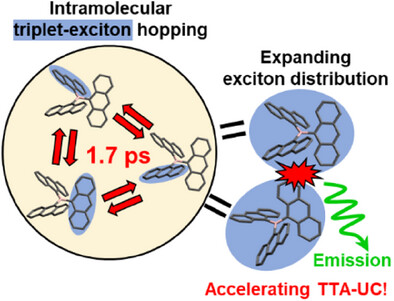
Triplet-triplet annihilation-based photon up-conversion (TTA-UC) system using an anthracene-based UC emission by assembling multiple chromophores linked to a boron to enhance TTA rate constant. Structural fluctuations driven by vibronic motion induce picosecond intramolecular triplet exciton hopping, expanding the triplet exciton distribution and enhancing intermolecular TTA reactivity.
Antimicrobials
Host–Guest Antimicrobial Based on Conjugated Oligoelectrolyte and Cyclodextrin
- First Published: 19 May 2025
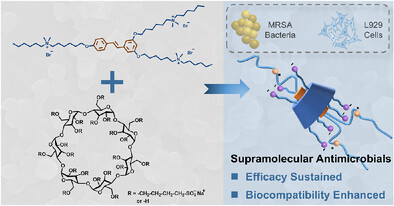
A new class of supramolecular antimicrobials was developed by forming host-guest inclusion complexes between conjugated oligoelectrolytes (COEs) and cyclodextrins. This supramolecular strategy enhanced COEs' biocompatibility without sacrificing antimicrobial efficacy, offering a new antibiotic design platform to address the typical trade-off between efficacy and selectivity in amphiphilic antimicrobials and combat antimicrobial resistance.
Coordination Polymers
Liquid Coordination Polymers with Anhydrous Proton Conductivity
- First Published: 19 May 2025

Functional liquid coordination polymers near ambient conditions are prepared by introducing H3PO4 as a network modifier. This process disrupts extended coordination networks, producing a stable liquid. Liquid properties are controlled by tuning the ratio of network modifiers, resulting in anhydrous proton conductivity up to 27 mS cm−1 at 353 K and viscosities ranging from 18.8 to 105.9 Pa·s at 303 K.
Peptides
Enzyme Induced Solid-Like Condensates Formation of Engineered Peptide in Living Cells for Prostate Cancer Inhibition
- First Published: 21 May 2025
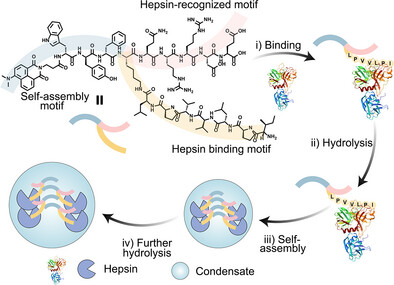
This study presents the condensate formation from engineered amphiphilic-branched peptides in living cells through enzymatic reactions. We describe the rational design and synthesis of DMN-SIPL, a peptide that forms solid-like condensates via liquid–liquid phase separation (LLPS) when triggered by the type-II membrane-associated serine peptidase hepsin.
Spatially Resolved Charge-Transfer Mechanism | Hot Paper
Kelvin Probe Force Microscopy Reveals Spatially Resolved Charge-Transfer Mechanism in CdS/BiOBr S-scheme Heterojunction Photocatalyst
- First Published: 19 May 2025
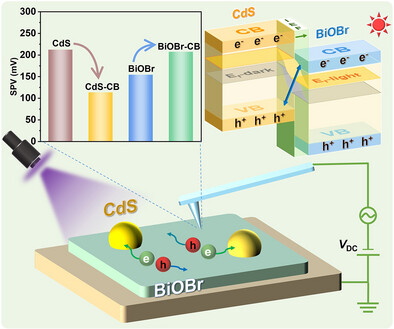
In situ KPFM reveals charge-transfer mechanism in CdS/BiOBr S-scheme heterojunctions. Upon light illumination, the Fermi level (Ef) of n-type semiconductors rises, generating a built-in electric field that drives photogenerated carrier separation. Electrons accumulate on CdS, lowering its surface photovoltage (SPV), while holes accumulate on BiOBr, elevating its SPV above that of the bare semiconductors, highlighting efficient charge separation.
Metal-Organic Polyhedra | Hot Paper
Isoreticular Synthesis of Mesoporous Metal-Organic Polyhedra with Permanent Porosity to Gas and Water
- First Published: 19 May 2025
Photocatalytic Valorization of Polyesters
Breaking Symmetry of Active Sites in Metal-Organic Frameworks for Efficient Photocatalytic Valorization of Polyester Plastics
- First Published: 19 May 2025
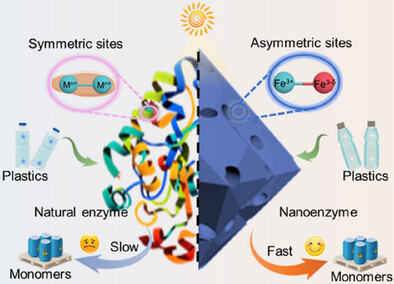
A feasible asymmetric ligand substitution strategy is developed to break symmetric sites on metal-organic frameworks (MOFs). The obtained defective MIL-101 (D-MIL-101) as a nanozyme featured with asymmetric Fe3-δ/Fe3+ sites exhibits high performance for photocatalytic depolymerization of polyester plastics.
Macrocycles
Phenylene Cage Synthesized by Metal-Mediated Assembly of Phenylene Macrocycle and Its Piezofluorochromic Behavior
- First Published: 19 May 2025
Medicinal Chemistry
Reengineering of a Proteomimetic Pan-Ras Inhibitor into a Ras Degrader
- First Published: 19 May 2025
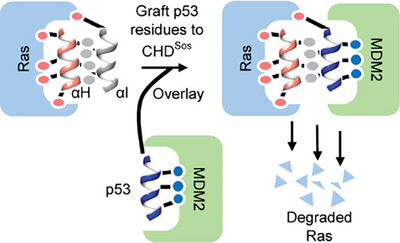
This manuscript describes the development of proteomimetic molecular glues. We show that crosslinked helix dimers can be designed to recognize two different proteins. We converted a Ras ligand into a Ras degrader by epitope grafting, an MDM2 E3 ligase binding domain solvent-exposed surface of the dimeric scaffold.
Theranostics
Nonconjugated Structural Distortion Promoting the Formation of NIR Triplet States in Phenothiazine Dyes for Cancer Photoimmunotherapy
- First Published: 19 May 2025
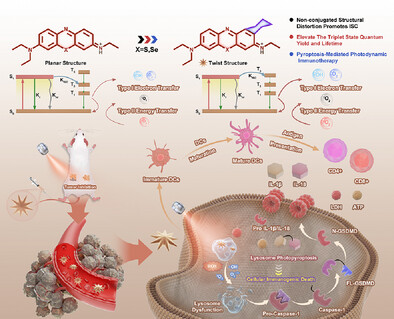
Through steric modification of PTZ dyes, we developed a nonconjugated structural distortion strategy that enhances ISC efficiency and prolongs triplet-state lifetime via optimized spin–orbit coupling. The optimized photosensitizer HNBS achieves oxygen-independent tumor ablation at ultralow doses while inducing pyroptosis-mediated immunogenic cell death for synergistic photoimmunotherapy.
Perovskite Solar Cells | Hot Paper
A Universal P-Type Heterointerface for Inverted Perovskite Solar Cells
- First Published: 20 May 2025
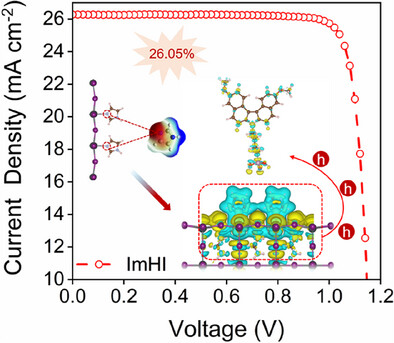
A universal p-type heterointerface between SAMs and perovskite was constructed using the heterocyclic dipolar compound imidazole hydroiodide (ImHI), enabling effective hole extraction from perovskite to SAMs and significantly reducing charge recombination. As a result, the optimized solar cells reached 26.05% and demonstrated excellent stability.
Overall Water Splitting | Very Important Paper
Al3+-Dependent Anisotropic Facet Tailoring on SrTiO3 Single Crystal for Photocatalytic Overall Water Splitting
- First Published: 19 May 2025
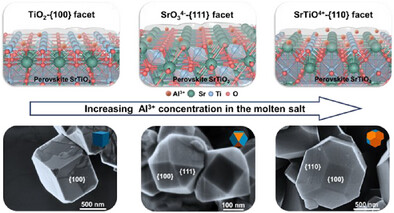
By precisely controlling Al3+ concentration in SrCl2 molten salt through the addition of miscible AlCl3, the anisotropic SrTiO3 single crystals with well-defined {100}, {111}, and {110} facets can be sequentially synthesized, achieving the optimal remarkable hydrogen evolution rate of 2621.85 µmol·h−1 and apparent quantum yield value of 50.5% at 350 nm for stoichiometric photocatalytic overall water splitting.
Flow Batteries
Harnessing Solvation Chemistry of Pentavalent Vanadium for Wide-Temperature Range Vanadium Flow Batteries
- First Published: 19 May 2025
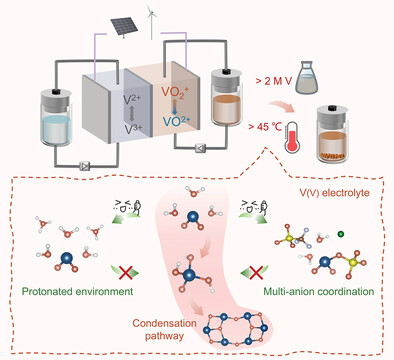
Atomic-level investigation of V(V) solvation transformation from [VO2(H2O)3]+ to VO(OH)3 via a four-step mechanism is presented, with the second deprotonation as the rate-determining step. This insight enables V(V) stabilization via proton and anion coordination, and a mixed-acid electrolyte was developed with exceptional stability at 50 °C for VFB.
Seawater Electrolysis
Delicate Control Over Electron Distribution and Water Dissociation Kinetics in Strongly Coupled Ru@NMoC Hybrid Catalyst Realizes Efficient Seawater Electrolysis
- First Published: 22 May 2025
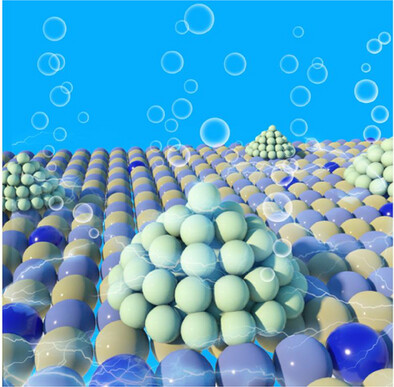
In alkaline seawater, ruthenium clusters in nitrogen-doped molybdenum carbide (Ru@NMoC) act as highly efficient catalysts to promote the hydrogen evolution reaction (HER). Theoretical calculations and X-ray absorption spectroscopy reveal that nitrogen doping induces electron redistribution around the Ru clusters, optimizing their electronic structure. This enhances the adsorption and desorption of intermediates, accelerating the HER kinetics.
C─H Activation
Quaternary Phosphonium Salts Enable Palladium-Catalyzed Annulative C─H Activation of Aminophosphines with Alkynes
- First Published: 20 May 2025
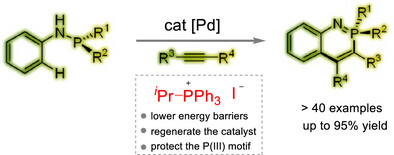
We developed a palladium-catalyzed system for P(III)-directed C─H activation of aminophosphines and cyclization with alkynes facilitated by deprotonative isomerization, using phosphonium salts as key additives. These salts lower energy barriers, regenerate the catalyst, and protect the P(III) group, enabling stereospecific synthesis of chiral phosphacycles.
Perovskite Solar Cells | Very Important Paper
Homogenized Self-Assembled Molecules for Inverted Perovskite Solar Cells
- First Published: 20 May 2025
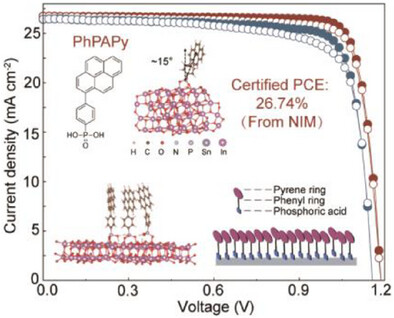
We report a rigid SAM (PhPAPy), designed to leverage the structural tunability of SAMs for achieving uniform substrate coverage with a single molecule. The high-quality HTL based on PhPAPy effectively minimizes direct perovskite–electrode contact, reduces defect density, and suppresses nonradiative recombination at the buried interface. The champion device achieved a certified reverse-scan PCE of 26.74% while maintaining T95 = 2000 h long-term stability (ISOS-L-2).
Zinc–Iodine Batteries | Very Important Paper
Unlocking Durable and Sustainable Zinc–Iodine Batteries via Molecularly Engineered Polyiodide Reservoirs
- First Published: 21 May 2025
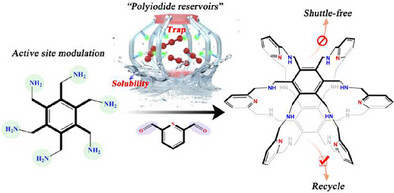
A recyclable “polyiodide reservoir”, engineered by the nitrogen-active site densities within covalent organic cages, is proposed as the iodine host. The resulting zinc–iodine battery demonstrates a capacity retention of 90.1% after 4000 cycles at 5 C and maintains 85.4% of its initial capacity after three reuse cycles.
Supramolecular Chemistry | Hot Paper
Type I-B Main-Chain Polyrotaxane Network
- First Published: 20 May 2025
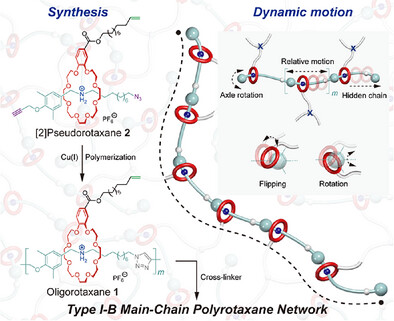
Utilizing “host−guest recognition followed by click polymerization” strategy, a Type I-B main-chain polyrotaxane (PR), featuring multiple wheels and stoppers along the polymer backbone, was efficiently synthesized. The first-ever Type I-B main-chain PR network (PRN) was then constructed to unveil the structure−property relationships of the PR. The special topological structures and dynamic characteristics of the PR skeleton provided multiple energy dissipation pathways, effectively toughening and strengthening the PRN.
Homogeneous Catalysis
Shaping of a Reactive Manganese Catalyst Enables Access to Polyfunctionalized Cyclohexanes via Enantioselective C(sp3)─H Bond Oxidation of 1,3-meso Diethers
- First Published: 20 May 2025
Organocatalysis
Organocatalytic Asymmetric Cycloaddition for the Construction of Chiral Indole-Fused Medium- and Large-Sized Rings
- First Published: 20 May 2025

The first catalytic asymmetric (4 + 4) and (4 + 4 + m) cycloadditions of 2-indolylacetates have been established via asymmetric organocatalysis, providing a useful protocol for constructing enantioenriched indole-fused medium- and large-sized rings. The biological evaluation of selected chiral indole products discovered several compounds with some extent of antitumor activity, indicating their potential applications in medicinal chemistry.
Actuators
Supramolecular Chalcogen-Bonded Shape Memory Actuators
- First Published: 20 May 2025
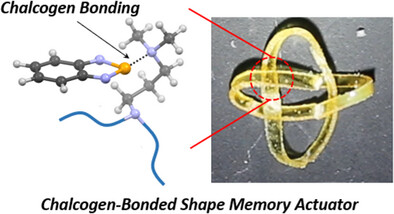
Supramolecular chalcogen-bonded liquid crystal elastomers incorporating Se⋯N interactions exhibit distinct shape memory and actuation properties. Stronger Se⋯N ChBs enable programmable one-way and two-way SME, while weaker S⋯N ChBs fail to induce actuation. Solid-state NMR, Raman spectroscopy, and DFT reveal the molecular interactions governing ChB-driven mechanical responses.
Coupled Photocatalysis | Very Important Paper
A Synergistic Photocatalysis–Electrocatalysis System for Efficient Hydrogen Generation and Energy-Saving Benzylamine Oxidative Upgrading
- First Published: 20 May 2025
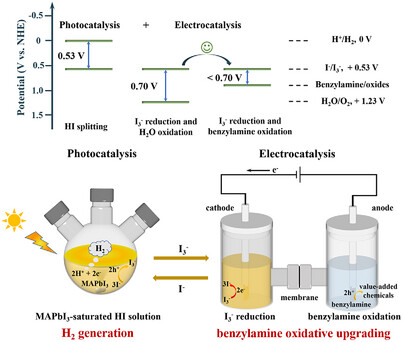
A synergistic photocatalysis–electrocatalysis system addresses the I3− light shielding in HI splitting and achieves efficient H2 generation and energy-saving benzylamine oxidative upgrading. The Re0.5Mo0.5S2-modified MAPbI3 photocatalyst generates 875.4 µmol of H2 in 4 h, and the electrocatalytic I3− reduction coupled with benzylamine oxidation can operate at a low potential of 0.44 V for 10 mA cm−2.
Crystalline Porous Materials | Hot Paper
Introducing Functional Groups Into B←N Organic Frameworks with Permanent Porosity
- First Published: 20 May 2025
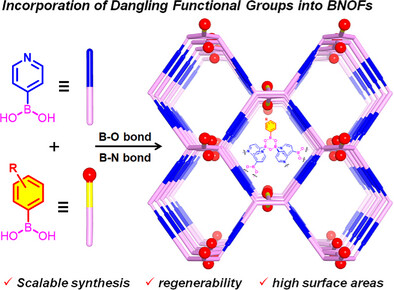
The functionality of crystalline organic frameworks incorporating dative B←N and reversible B─O bonds (BNOFs) is engineered by introducing diverse dangling groups. Notably, the carboxyl-functionalized BNOF-5 exhibits superior reversible NH₃ adsorption compared with their less- or nonfunctionalized counterparts. Combining high surface areas, low cost, and exceptional sustainability, these functionalized frameworks represent a promising platform for advanced applications.
Methane Oxidation | Hot Paper
Hydroxyl-Promoted C─C Coupling for Selective Methane Conversion into Ethane on Cerium Oxide Photocatalyst
- First Published: 20 May 2025
Batteries | Hot Paper
Layered-Spinel Heterogeneous Structure and Oxygen Vacancies Enable Superior Electrochemical Performance for Li-Rich Cathodes
- First Published: 25 May 2025

A multifunctional interfacial layer of layered-spinel heterogeneous structure and oxygen vacancies was formed on the surface of LRMOs, which improved the structural stability and the reversibility of anion redox reaction. The treated cathode features high initial capacity of 314.5 mAh g−1 with a coulombic efficiency of 88.3%. When cycling at 1 C, the cathode shows a high capacity retention of 87.9% with a small voltage decay of 1.26 mV per cycle.
Sustainable Chemistry
Concurrent Production of Glycolic Acid via Anode Valorization of Plastic Paired With Cathode Upcycling of Biomass Derivative
- First Published: 21 May 2025
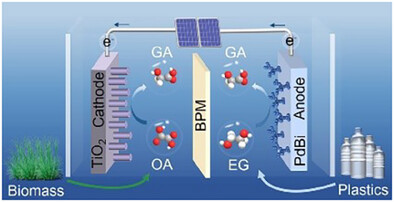
A paired electrolysis system for simultaneous glycolic acid production was constructed through combining anodic oxidation of polyethylene terephthalate hydrolysate and cathodic reduction of biomass-derived oxalic acid, which was enabled by the rational design of a CO-tolerant PdBi alloy anode and an earth-abundant TiO2 cathode.
Solid Electrolyte Interphases
Molecularly Woven Artificial Solid Electrolyte Interphase
- First Published: 22 May 2025
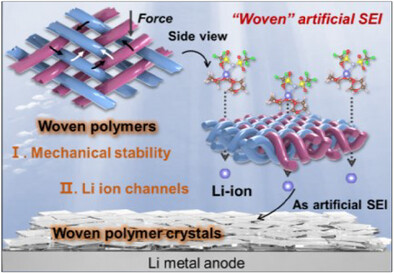
A molecularly woven artificial solid electrolyte interphase (SEI) was constructed by coating woven polymer crystals onto the Li metal anode. The mechanical stability of these woven polymer crystals, combined with their intrinsic Li-ion channels, enables the resulting lithium-metal batteries to be dendrite-free and long-life.
Methane Oxidation | Hot Paper
Regulating Reactive Oxygen Species via Orbital Rehybridization Between Intermediate and Active Site for Selective Methane Photooxidation to Methanol
- First Published: 23 May 2025
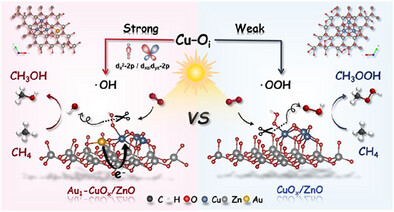
A unique regulation mechanism of reactive oxygen was proposed for selectively photocatalytic conversion of methane to methanol under mild conditions. This new mechanism addresses the contradiction between activity and selectivity faced with the traditional uncontrolled generation of reactive oxygen species by regulating the interaction between active centers and key intermediate.
Sustainable Chemistry
Lignin Dissolution and Direct Ultrasmall-Lignin-Nanoparticle Formation in Acidic and Alkaline Deep Eutectic Solvents: A Molecular-Level Insight
- First Published: 21 May 2025
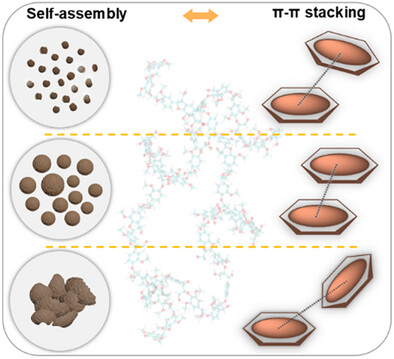
Structural interpretation and molecular dynamics simulations reveal how molecular moieties and interaction networks influence the π–π stacking structures and conformational states of lignin during dissolution and aggregation: laterally shifted in deep eutectic solvents, offset-stacked in tetrahydrofuran, and stretched in dimethyl sulfoxide.
Stimuli-Responsive Polymers
Photoacid-Induced Supramolecular Network Disassembly: A Systems Approach to Stimuli-Responsive Polymers
- First Published: 22 May 2025

Light-responsive supramolecular (SM) materials are attractive for many applications but are difficult to achieve. Here, we report a systems approach that involves blending a hydrogen-bonded SM network with a photoacid generator. The resulting material displays significant softening upon UV irradiation and functions as an efficient debonding-on-demand adhesive.
Solid-State Zinc-Ion Batteries | Hot Paper
Design Considerations of Ionic Conductive Elastomeric Electrolyte for Solid-State Zinc Metal Batteries with High Safety and Long Life
- First Published: 22 May 2025

An ionic conductive elastomeric electrolyte rich in high-density hydrogen bond network was constructed through the cross-linked encapsulation of PA molecules with PVA chains during solvent evaporation. Unlike the conventional hydrogel electrolytes, elastomeric electrolytes (ZICE-4) demonstrate the fast Zn2+ ion transport, uniform Zn2+ flux, high volumetric adaptability, and wide working temperature range.
Batteries | Very Important Paper
Deciphering Coulombic Efficiency of Lithium Metal Anodes by Screening Electrolyte Properties
- First Published: 21 May 2025
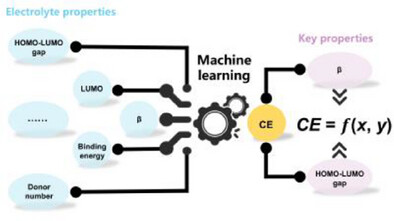
Both hydrogen-bond acceptor basicity (β) and the energy level gap between the lowest unoccupied and the highest occupied molecular orbital (HOMO-LUMO gap) of solvents are identified as the top two parameters impacting CE by machine learning. A regression model is further proposed to estimate the CE based on β and HOMO-LUMO gap, which provides a reliable interpretable quantitative model for rational electrolyte design.
Lithium-Ion Batteries
In Situ Solid Conversion into Mechanically Adaptive LiF-Rich Solid Electrolyte Interphase via MgF2 Precursor on Si Surface in Lithium-Ion Batteries
- First Published: 23 May 2025
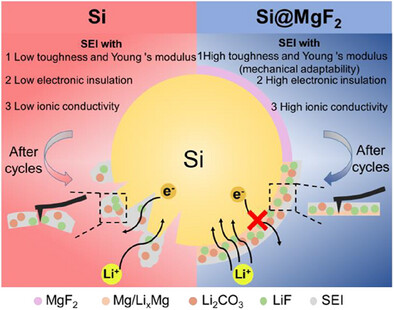
MgF2 coating with high coating integrity is in situ constructed on Si nanoparticles. During electrochemical cycling, the MgF2 layer undergoes in situ conversion into LiF and Mg, thereby forming a robust solid electrolyte interphase (SEI) with high mechanical adaptability, excellent electronic insulation, and high ionic conductivity. This unique transformed SEI layer effectively mitigates mechanical degradation and interfacial side reactions, contributing to significantly enhanced electrochemical properties of the Si anode.
Lanthanide Nanoparticles | Very Important Paper
Intermediate Layer-Engineered Lanthanide Nanoparticles Enable Deep Bioorthogonal Liver Tumor and Vascular Imaging via Switchable NIR-II Emissions
- First Published: 23 May 2025
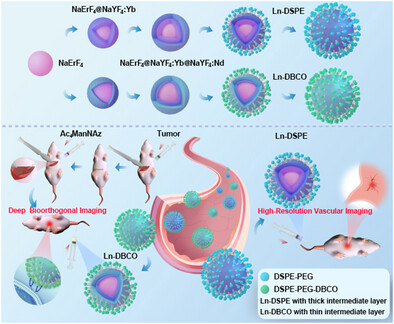
By engineering the intermediate layer of lanthanide nanoparticles, we achieve switchable NIR-II emissions, enabling high-resolution vascular imaging at 1525 nm and deep bioorthogonal liver tumor imaging at 1064 nm. This will provide reference for designing imaging probes to adapt to fluorescence imaging in different scenes.
Membranes
Ultraselective Permeable Polyamide Membranes Prepared via Interfacial Polymerization of Alkane and Deep Eutectic Solvent
- First Published: 28 May 2025
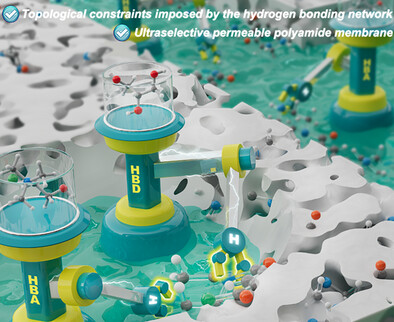
A green interfacial polymerization platform that can eliminate side reactions was designed to precisely regulate the preparation of narrow pore size polyamide membranes through a dynamic 3D hydrogen bonding network. In addition, the platform has unprecedented universality, and the membranes produced have an order of magnitude higher selectivity for NaCl/Na2SO4, as well as excellent permeability.
Sustainable Chemistry | Very Important Paper
Synergistic Effects of Nitrogen and Oxygen Active Sites in Covalent Organic Frameworks for Highly Efficient Gold Recovery
- First Published: 23 May 2025
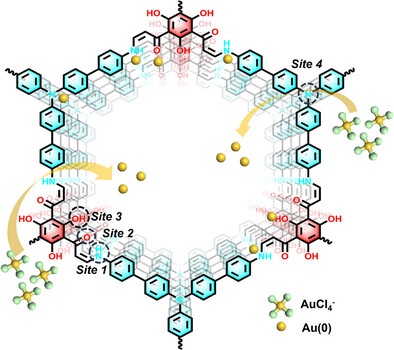
We presented the rational design and synthesis of two β-ketoenamine-linked COFs engineered with high-density nitrogen/oxygen active sites for selective gold recovery. Their comprehensive gold recovery performance is among the best in the COF field, with the third highest adsorption capacity, ultrafast adsorption kinetics, and near-perfect selectivity, resulting from the synergistic effect of redox interactions, electrostatic interactions, coordination bonds, and hydrogen bonding.
Drug Delivery
Lewis-Base Electrolyte Additive | Hot Paper
Lewis-Base Electrolyte Additive Mediates Interfacial Chemistry for Stable Lithium Metal Batteries
- First Published: 22 May 2025
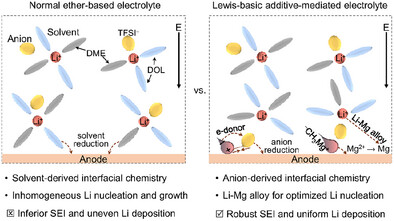
A feasible ether-based electrolyte incorporating methylmagnesium chloride as a Lewis-basic additive is proposed to regulate interfacial chemistry. This electrolyte plays a crucial role in promoting a robust solid-electrolyte interphase formation and enhancing Li deposition, achieved through the bifunctional effects of anion-additive interactions. The designed electrolyte contributes to the superior cycling stability of Li metal anodes.
Polymer Chemistry
Organocatalyzed Copolymerization of CO, Se, and Oxetane: O/Se Exchange Reaction Determining Chain Structure
- First Published: 22 May 2025
Batteries
Interface Engineering of Branched PdCoPx Nanostructures for High-Performance Lithium–Oxygen Batteries
- First Published: 24 May 2025
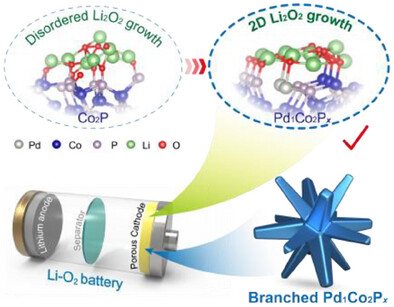
A direct synthesis strategy was used to prepare branched Pd1Co2Px nanostructures with rich Pd─Co─P interface sites, demonstrating their efficacy as cathode catalysts for lithium–oxygen batteries (LOBs). The Pd─Co─P interfaces can direct the two-dimensional growth of Li2O2, thereby facilitating the formation of more easily decomposable film-like Li2O2 products, which enhances the stability of LOB cycling.
Communication
Organocatalysis | Very Important Paper
Highly Enantioselective Organocatalysis with Bidentate Halogen Bond Donors
- First Published: 01 May 2025
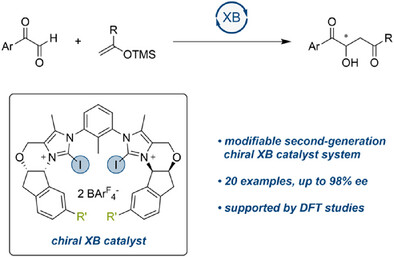
In a model Mukaiyama aldol reaction with unbiased substrates, high enantioselectivity was achieved with a modifiable bidentate iodine(I)-based halogen bonding organocatalyst. The crucial role of halogen bonding was confirmed by the low performance of the corresponding hydrogen bond donor and via DFT calculations.
CO2 Reduction
Boosting Current Density of Electrocatalytic CO2 Reduction using Metal–Enzyme Hybrid Cathodes
- First Published: 27 April 2025
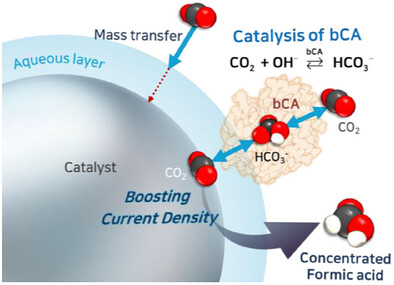
A metal-enzyme (M-bCA) hybrid platform integrates highly stabilized and densely loaded bovine carbonic anhydrase (bCA) immobilized on CNTs with Sn and Bi catalysts. The enzyme dynamically catalyzes the reversible interconversion between CO2 and bicarbonate, enabling rapid local CO2 regeneration at the catalyst surface. This enhanced CO2 supply boosts CO2RR current densities beyond mass transfer limits.
Asymmetric Catalysis | Very Important Paper
Rapid Access to an Enantioenriched Spiro Bisindole Directly from Indole and Acetone
- First Published: 20 May 2025
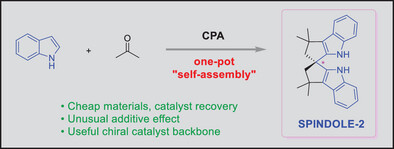
A catalytic enantioselective one-pot “self-assembly” strategy was developed for the exceedingly convenient access to a spiro bisindole directly from indole and acetone. The obtained enantiopure C2-symmetric bisindole showed exceptional performance as a chiral backbone of diverse effective catalysts or ligands.
Thianthrenium Salts
Copper-Photoredox-Catalyzed C(sp3)–C(sp3) Reductive Cross-Coupling of Alkyl Bromides with BCP-Thianthrenium Reagents
- First Published: 20 May 2025
Total Synthesis
Enantioselective Divergent Total Syntheses of Cycloaurenones and Dysiherbols
- First Published: 15 April 2025
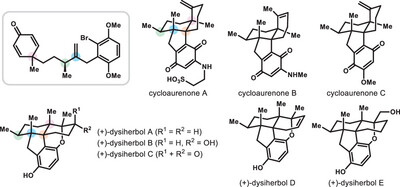
We report the enantiodivergent syntheses of cycloaurenones and dysiherbols via a common cyclohexadienone intermediate, that is, a local desymmetric Giese–Baran-type cyclization and a copper-catalyzed enantioselective conjugate addition reaction. This cyclohexadienone was obtained by a bidirectional synthesis from a chiral bis-Weinreb amide, with stereocenters set by a novel Rh-catalyzed hydrogenation (>99:1 chiral/meso ratio, >99% e.e.).
Transpeptidations
Leveraging Sortase A Electrostatics for Powerful Transpeptidation Reactions
- First Published: 09 May 2025

The electrostatic profile of sortase A pentamutant (SrtA-5M) is leveraged to improve SrtA-5M-mediated transpeptidations by incorporating short, charged peptidic modules into the substrates. The reaction is highly efficient, straightforward to implement, compatible with recombinant protein expression, and enables remarkably clean protein labeling and protein-protein coupling.
Synthetic Methods
A Visible-Light-Driven O-Glycosylation with Selenoglycosides Mediated by Chalcogen Bonding to Umemoto's Reagent
- First Published: 09 May 2025

Visible-light irradiation of solutions of phenylselenoglycosides and Umemoto's reagent in the presence of alcohols results in often high-yielding formation of O-glycosidic products. Experimental and computational work suggests that chalcogen-bonded electron–donor–acceptor (EDA) complexes are critical intermediates in this process which may proceed through photoinduced electron transfer.
Transition-Metal Catalysis | Hot Paper
Switchable Regiodivergent Reductive Alkyl–Alkyl Coupling by Nickel Catalysis: Sorting Different Alkyl–Nickel Intermediates
- First Published: 13 May 2025
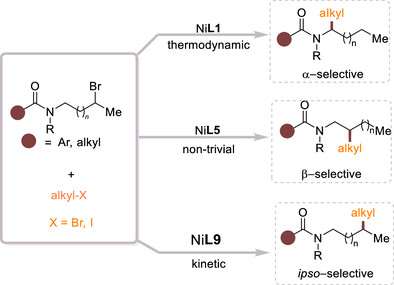
A ligand-controlled nickel-catalyzed site-divergent reductive alkyl–alkyl cross-coupling between two different migratory alkyl halides has been developed. The reaction proceeds via tunable non-migratory or site-defined migratory alkyl–alkyl cross-coupling at room temperature, providing a straightforward protocol for the alkylation of unactivated Csp3─H bonds by differentiating thermodynamic and non-thermodynamic alkyl intermediates to deliver three types of branched N-acyl amine architectures from identical starting materials.
NTE Materials
Giant Negative Thermal Expansion Induced by Topological Phase Transition in a Potassium Zinc Phosphate Material
- First Published: 15 May 2025
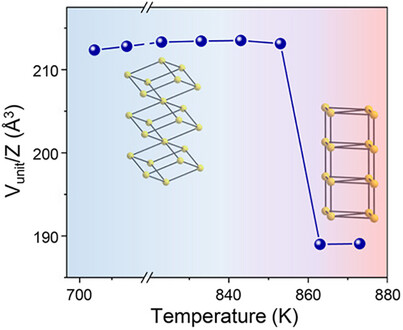
KZnP3O9 exhibits record negative thermal expansion (ΔV/V = −11.49%) through an unprecedented topological phase transition, where infinite (PO4)∞ chains reorganize into discrete P3O9 rings. The synergistic couplings among K+ sublattice compression, covalent bond rearrangement, and vibrational destabilization drive this giant negative thermal expansion.
Photochemistry
Enantioconvergent Synthesis of α-Fluoroalkyl Alcohols Enabled by Photocatalytic Radical Brook Rearrangement
- First Published: 14 May 2025

The first application of radical Brook rearrangement in asymmetric cross-coupling reaction has been developed, enabling enantioconvergent synthesis of chiral α-aryl-α-fluoroalkyl alcohols. The reaction proceeded through the combination of photocatalytic generation of masked ketyl radicals and Ni-catalyzed asymmetric cross-coupling with aryl/heteroaryl bromides. The the presence of para-methoxyphenyldimethylsilyl group lowers the oxidation potentials of the racemic alcohol substrates, enabling a radical relay process to form carbon-centered radicals from initial generation of the aryl cation radicals. The reaction features mild conditions, broad substrate scope, and excellent enantioselectivity. The formal synthesis of bioactive Odanacatib and LX-1031 and various down-stream transformations demonstrated the synthetic potential of the reaction.
Photocatalysis
Dynamic Crystal-Structure and Active-Site of Defective ZnAl-Catalysts During CO2 Photoreduction
- First Published: 15 May 2025
Biocatalysis
Imine Reductase–Catalyzed Remote Stereocontrol for Enantiodivergent Synthesis of Cyclohexylidene-Based Axially Chiral Amines
- First Published: 20 May 2025

A biocatalytic route for the enantiodivergent synthesis of cyclohexylidene-based axially chiral amines was developed. This method features imine reductase catalyzed remote stereocontrol in establishing the unusual axial chirality arising from the restricted double bond, providing both enantiomers of chiral products in high yield with high enantioselectivity.
Synthetic Methods
PCET Photodecarboxylation for SN2’-Type Alkylation of gem-Dichlorocyclobutenones
- First Published: 20 May 2025
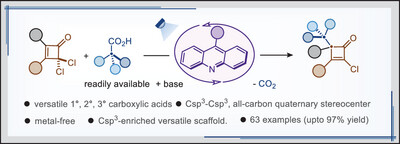
A versatile radical SN2’-type alkylation of gem-dichlorocyclobutenones is reported by photodecarboxylation of free carboxylic acids via proton-coupled electron transfer (PCET). This mild and scalable Csp3─Csp3 bond forming alkylation method enables efficient access to Csp3-enriched 4-alkylated α-chlorocyclobutenones with excellent functional group tolerance, employing carboxylic acid-based drugs, fatty acids, and steroids.
Natural Products Synthesis
Enantioselective Total Synthesis of (–)-Psiguadial A
- First Published: 20 May 2025
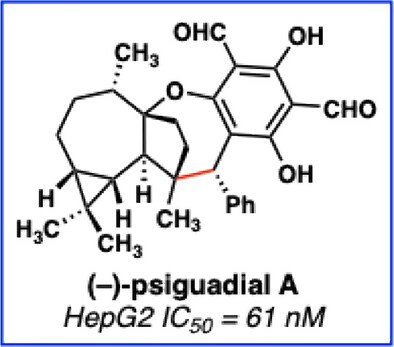
A biomimetic approach harnessing reactive species enabled the enantioselective synthesis of the complex meroterpenoid psiguadial A through an enolate–ortho-quinone methide (oQM) umpolung strategy and late-stage cationic ring closure. The final fully decorated aromatic core was successfully synthesized by adaptation of modern aryl methyl ether deprotection and formylation methodologies, establishing efficient access to this class of natural products.






